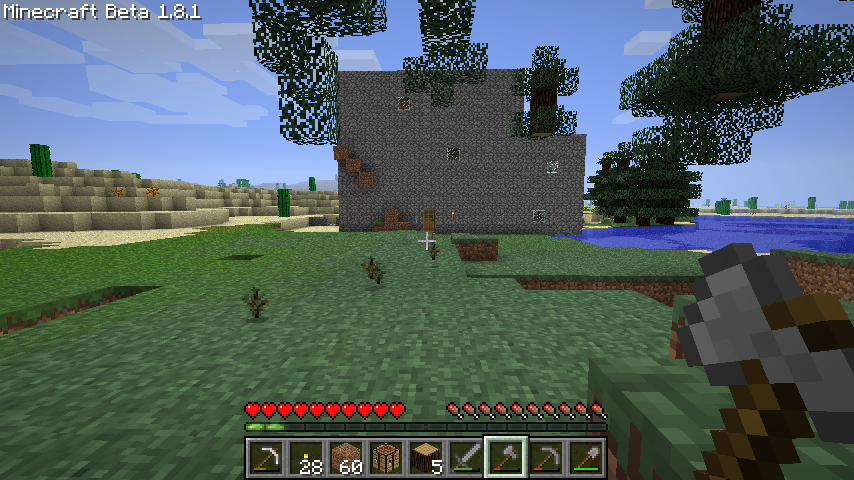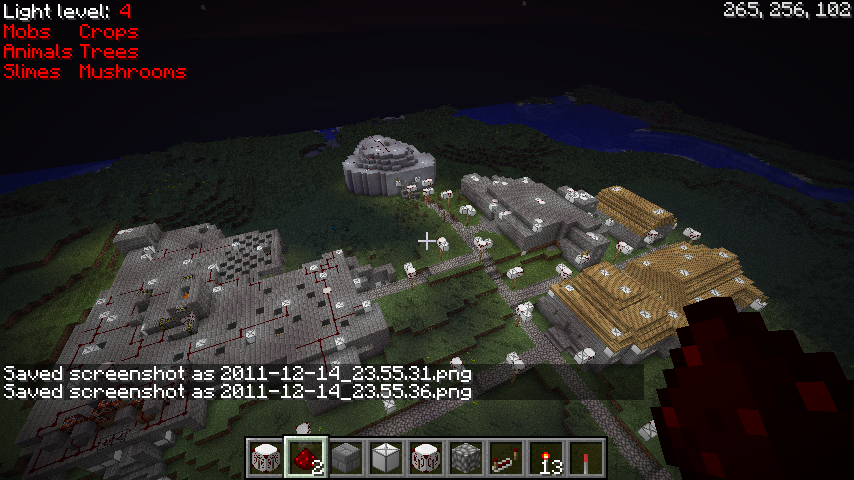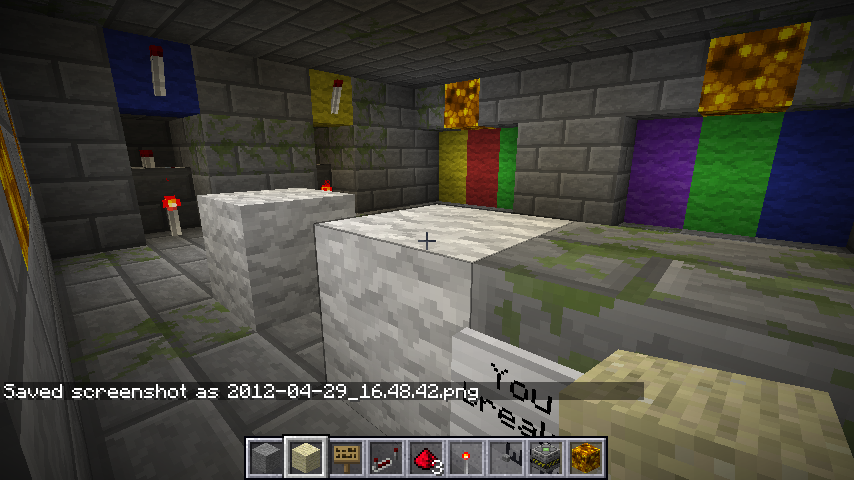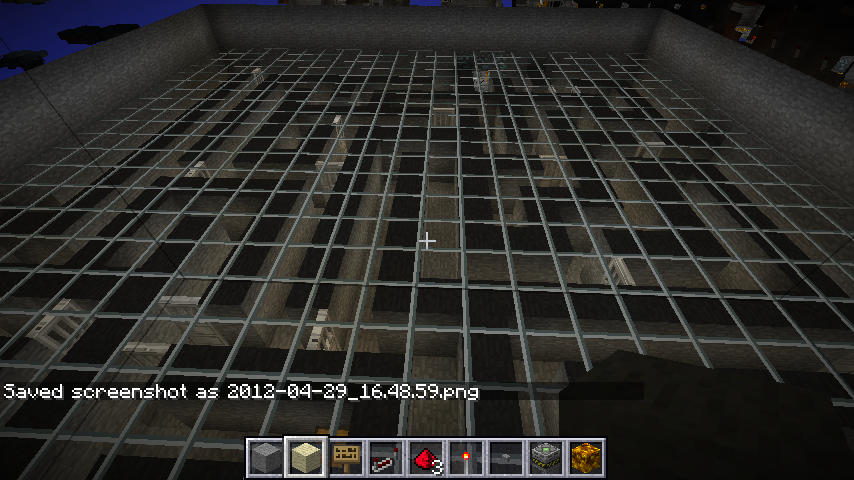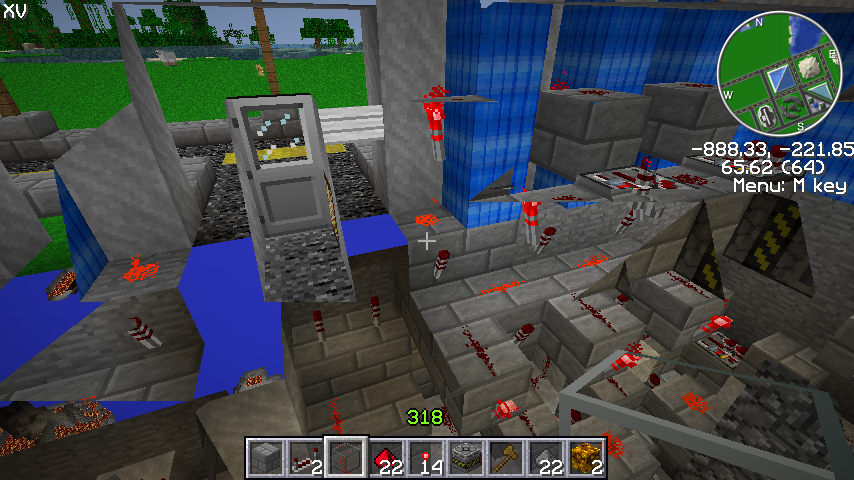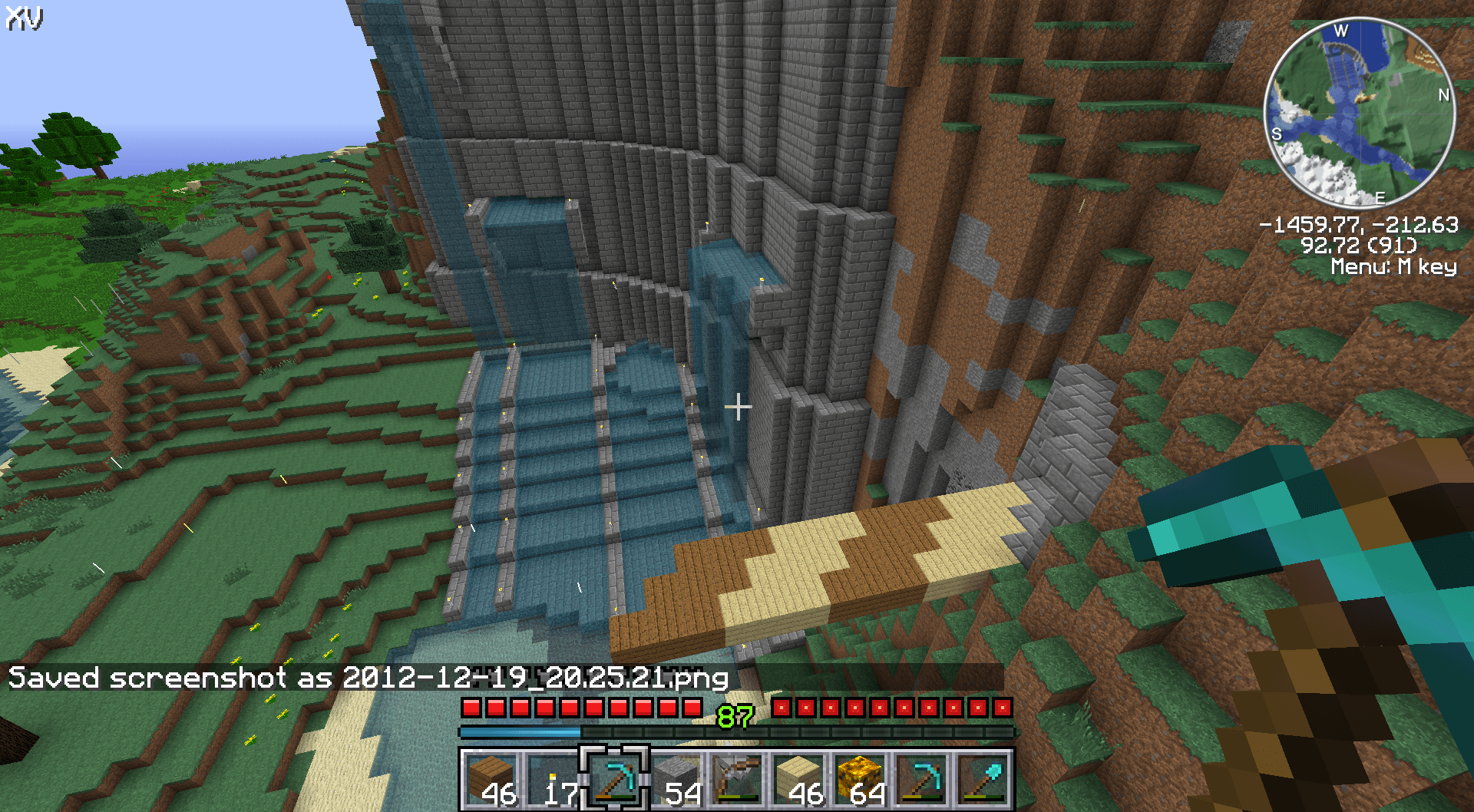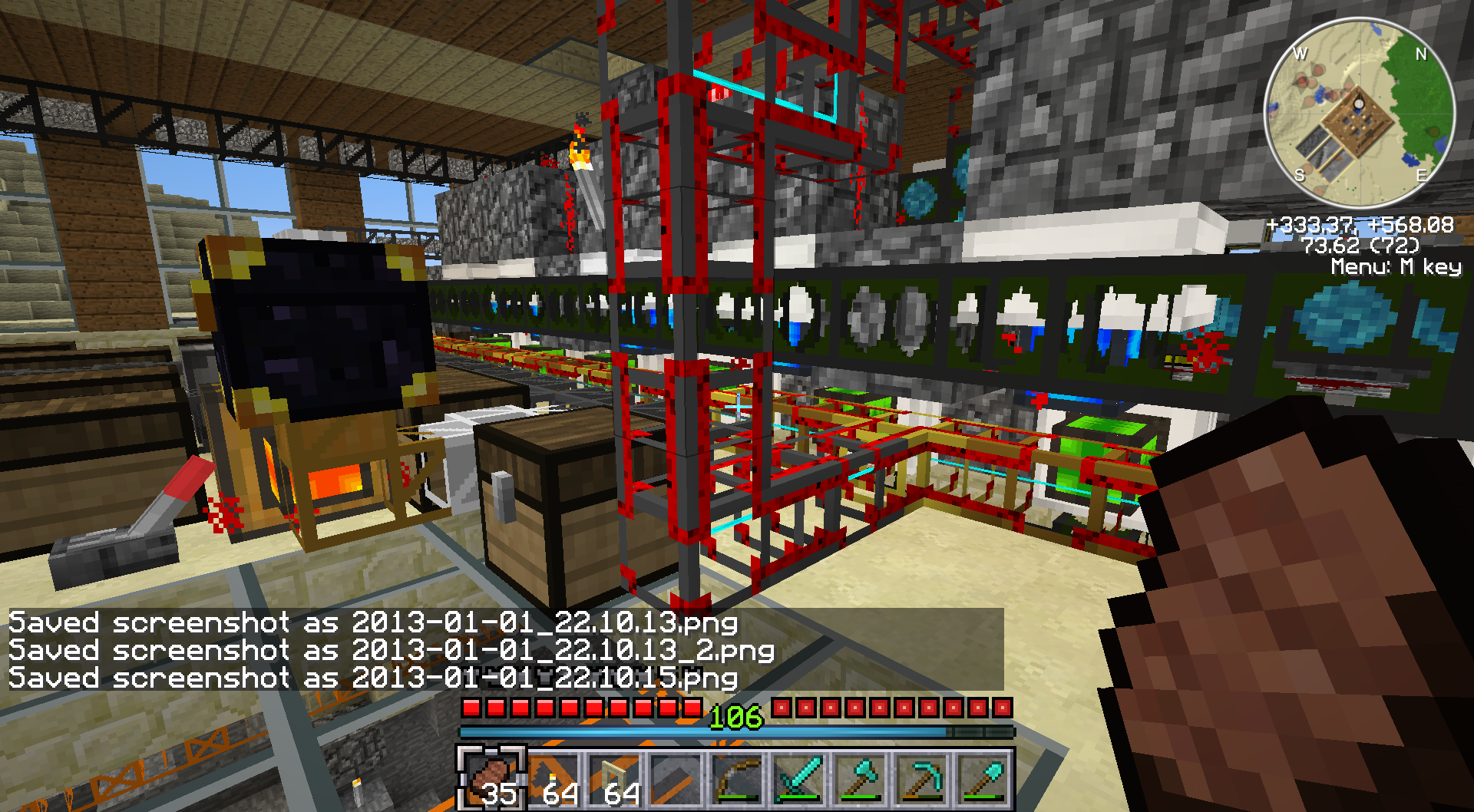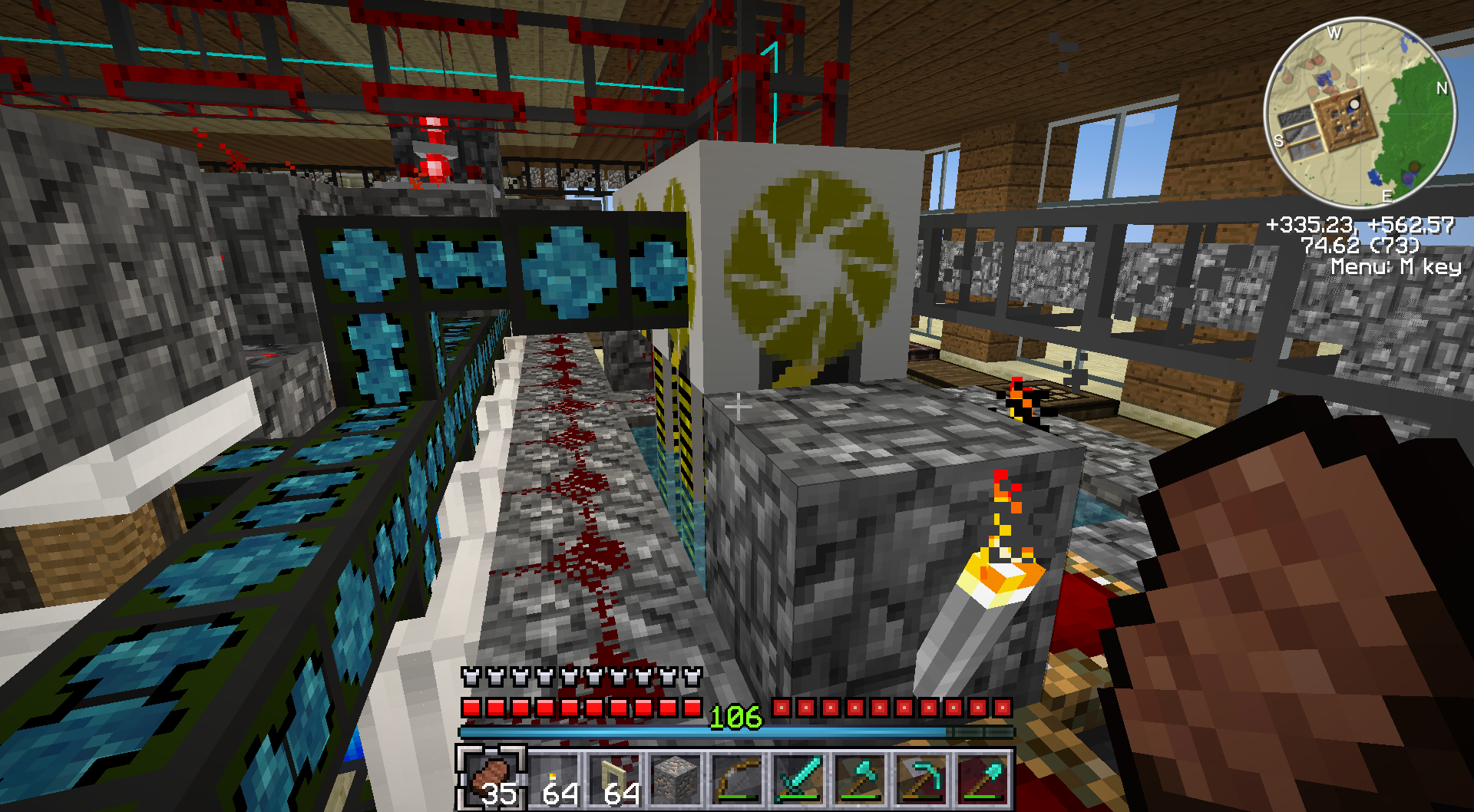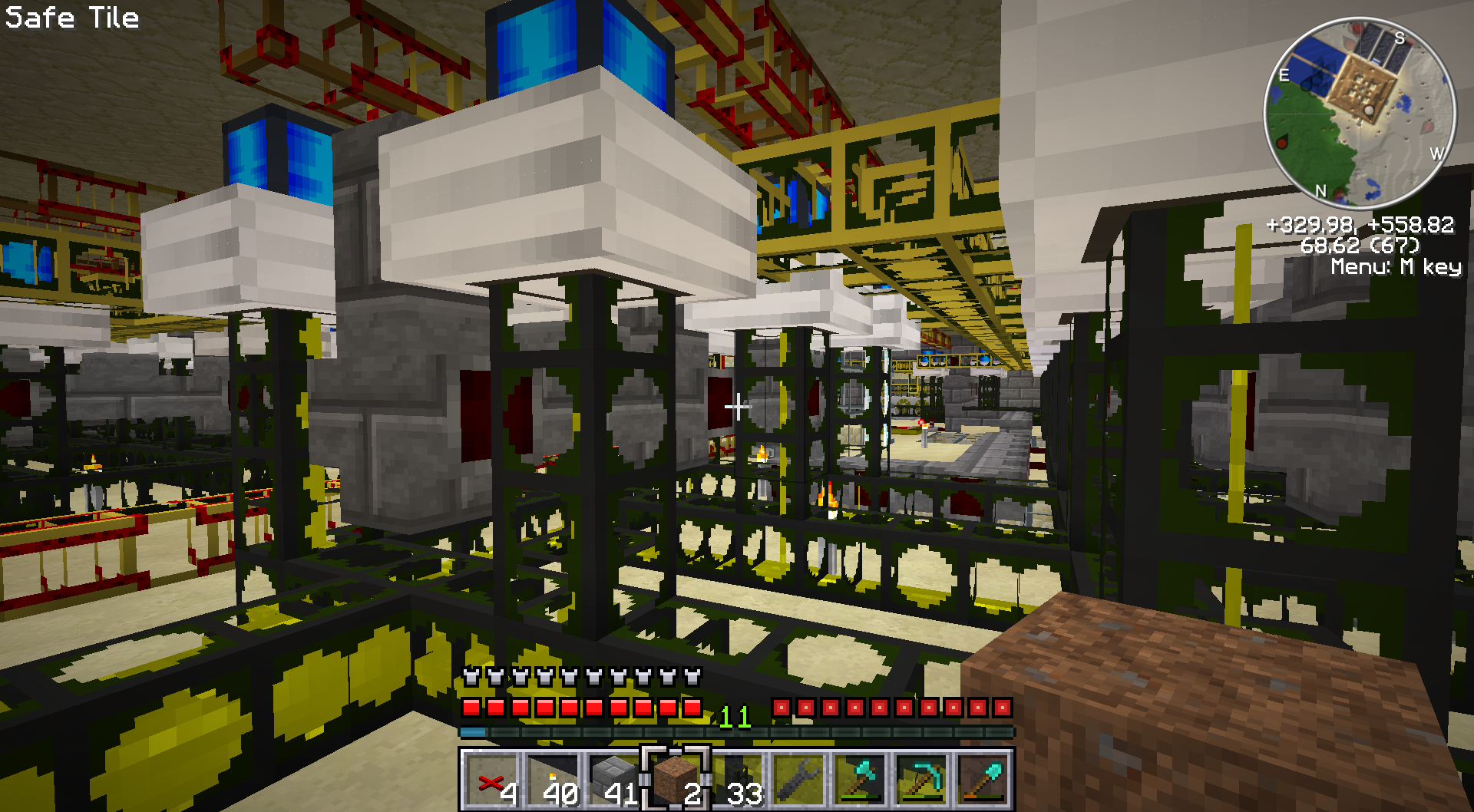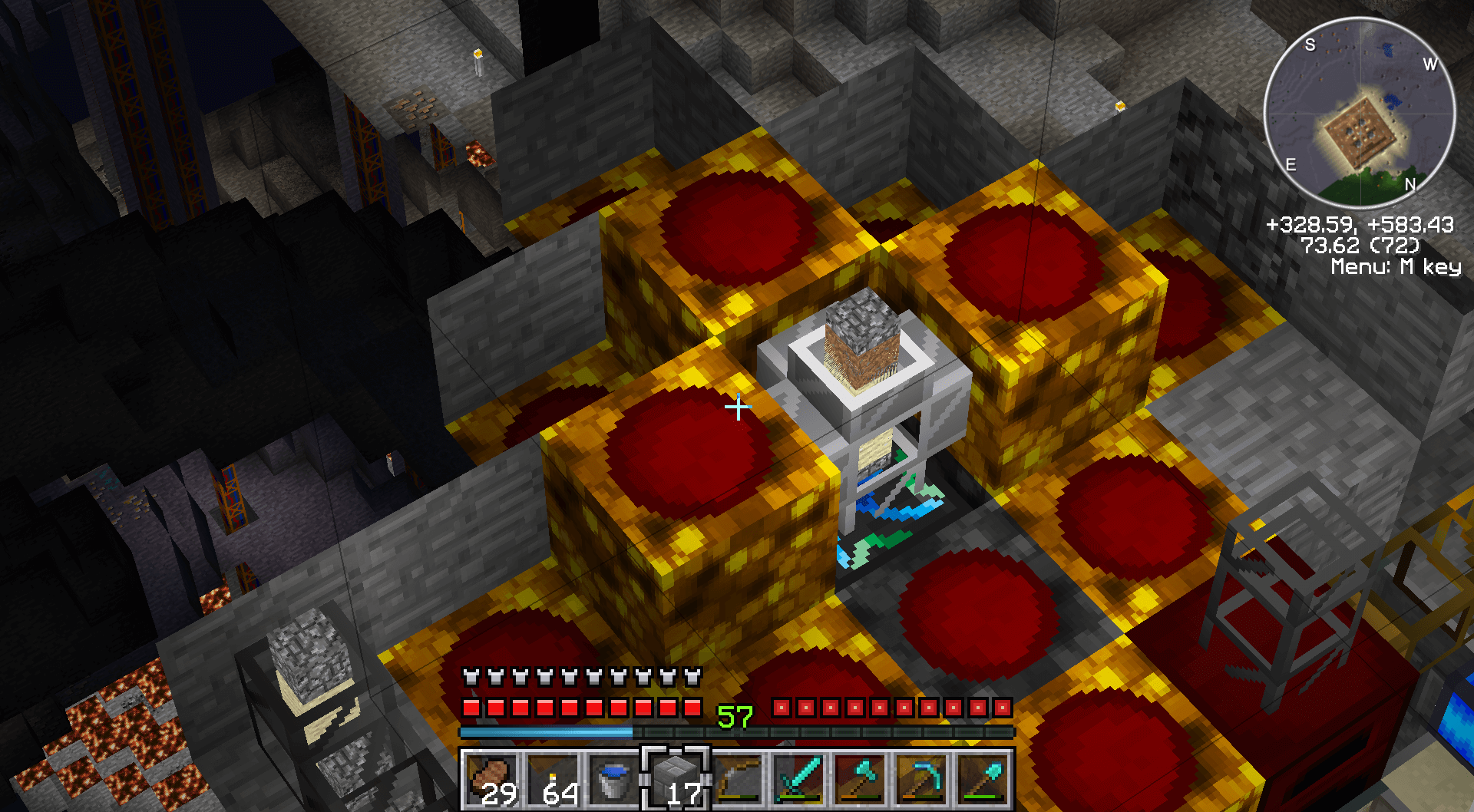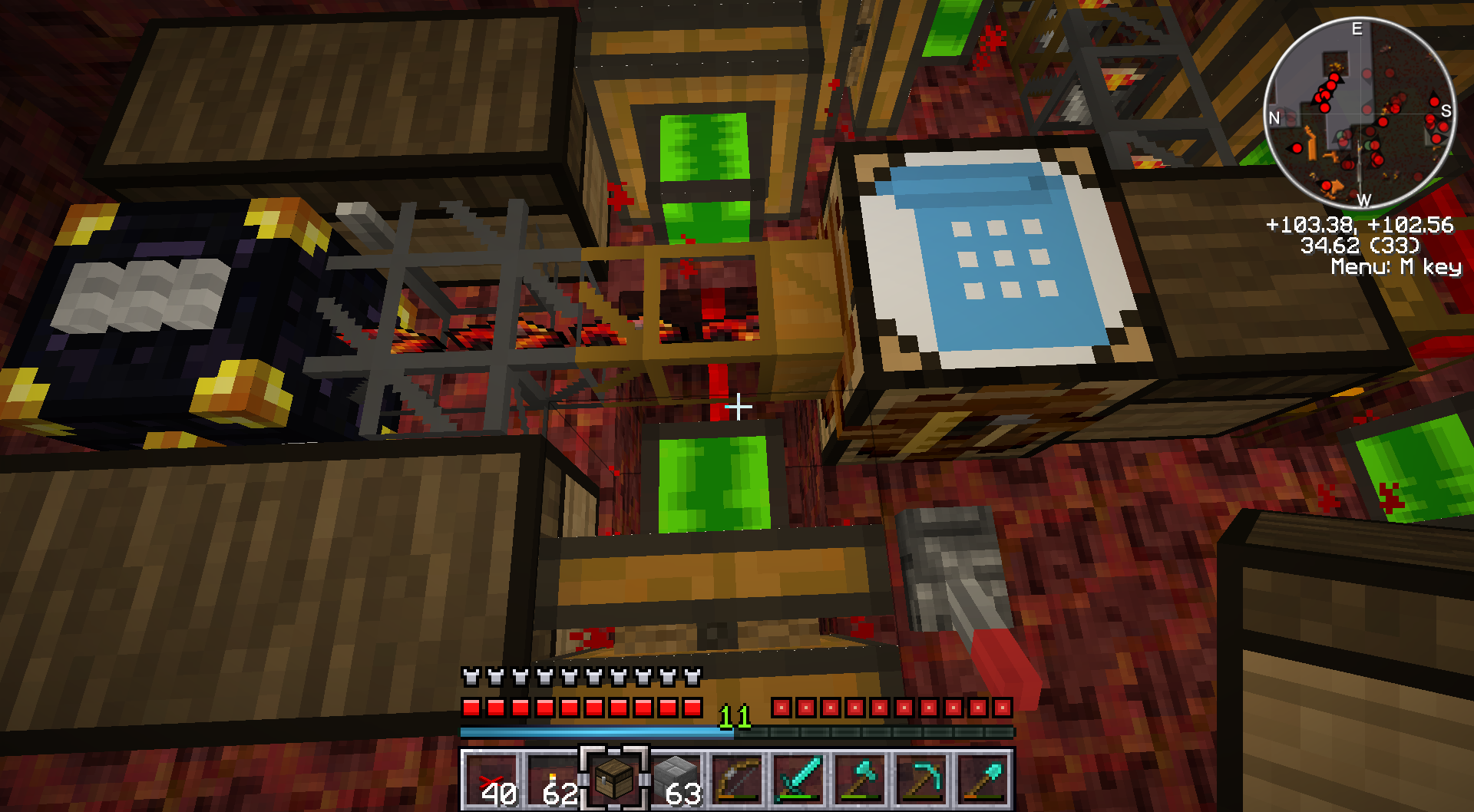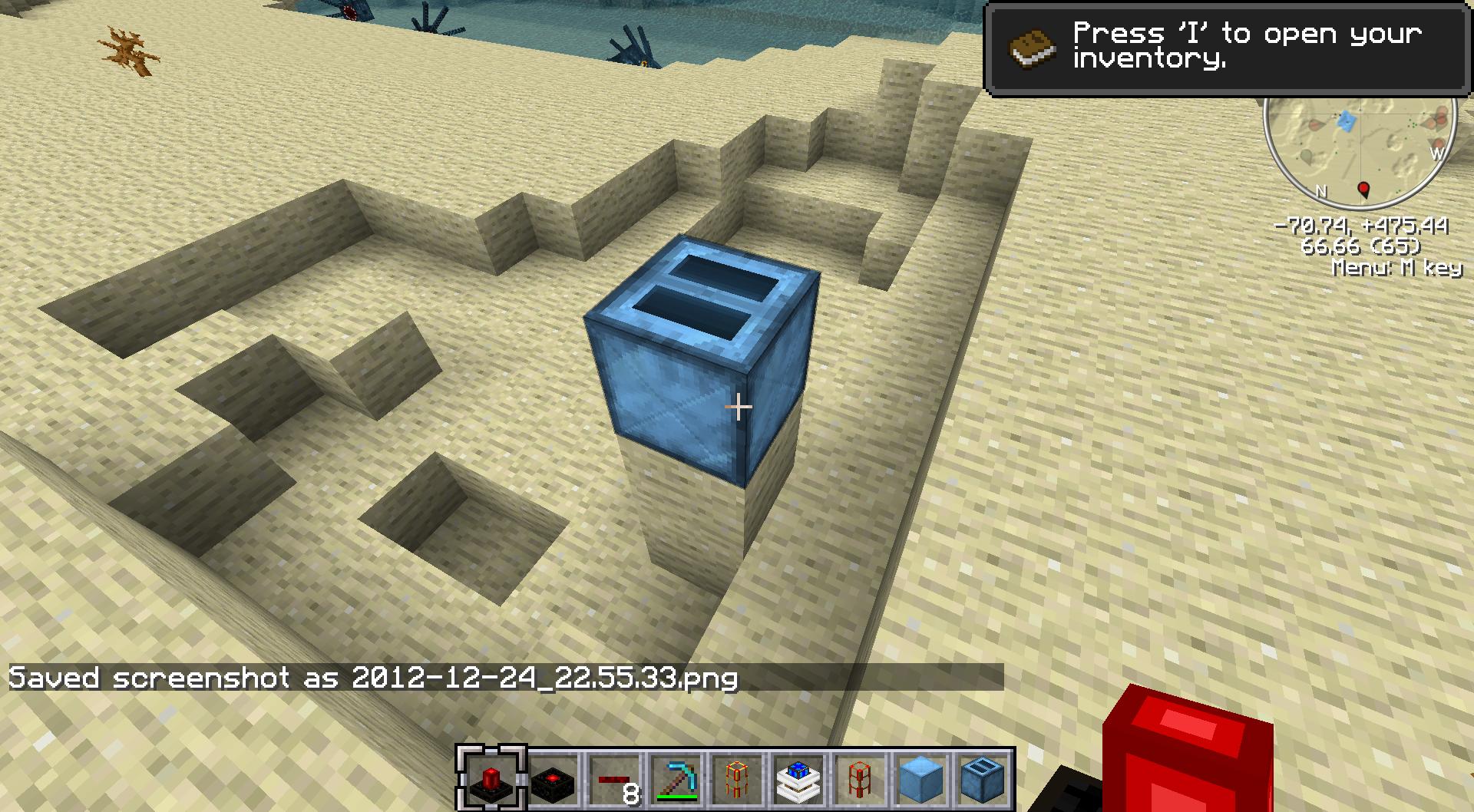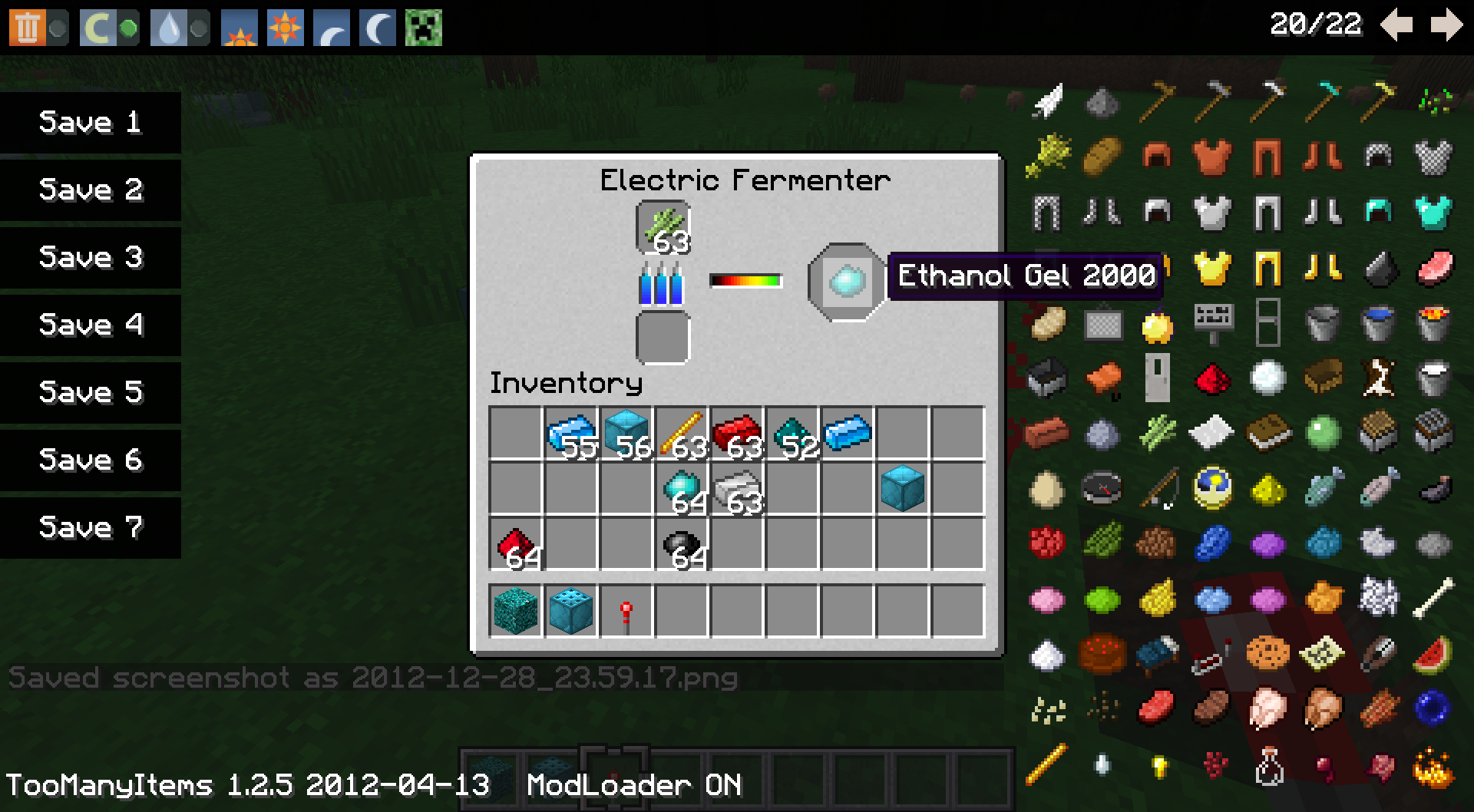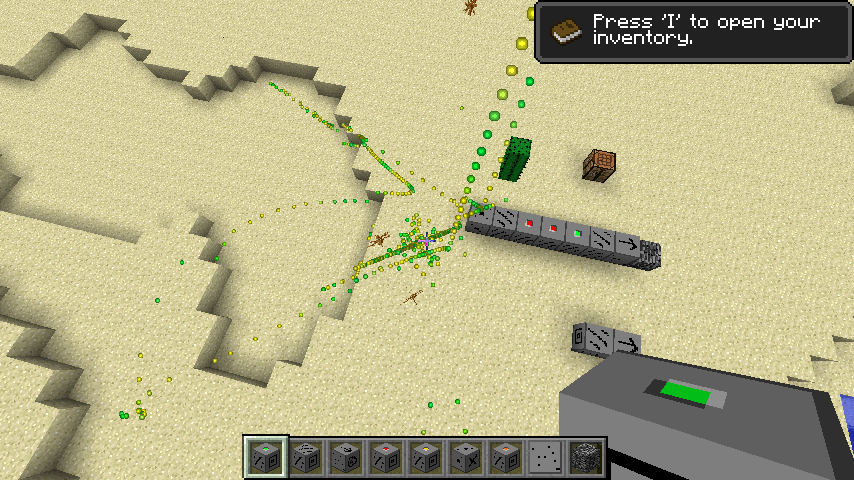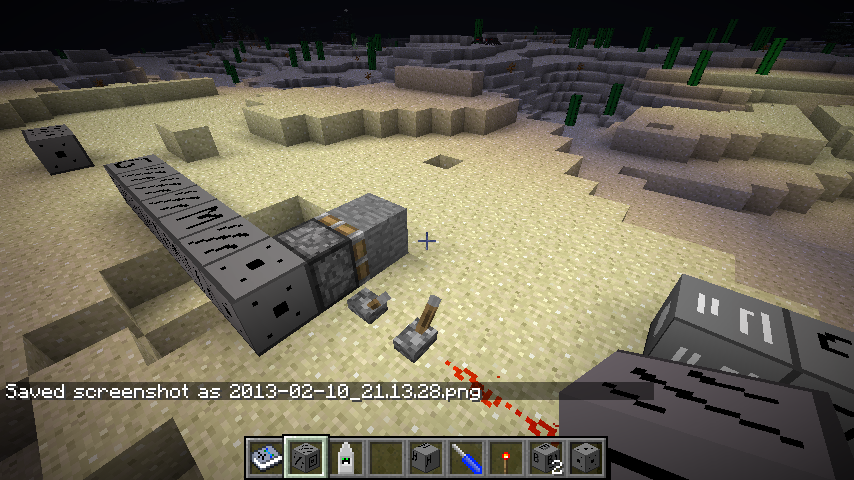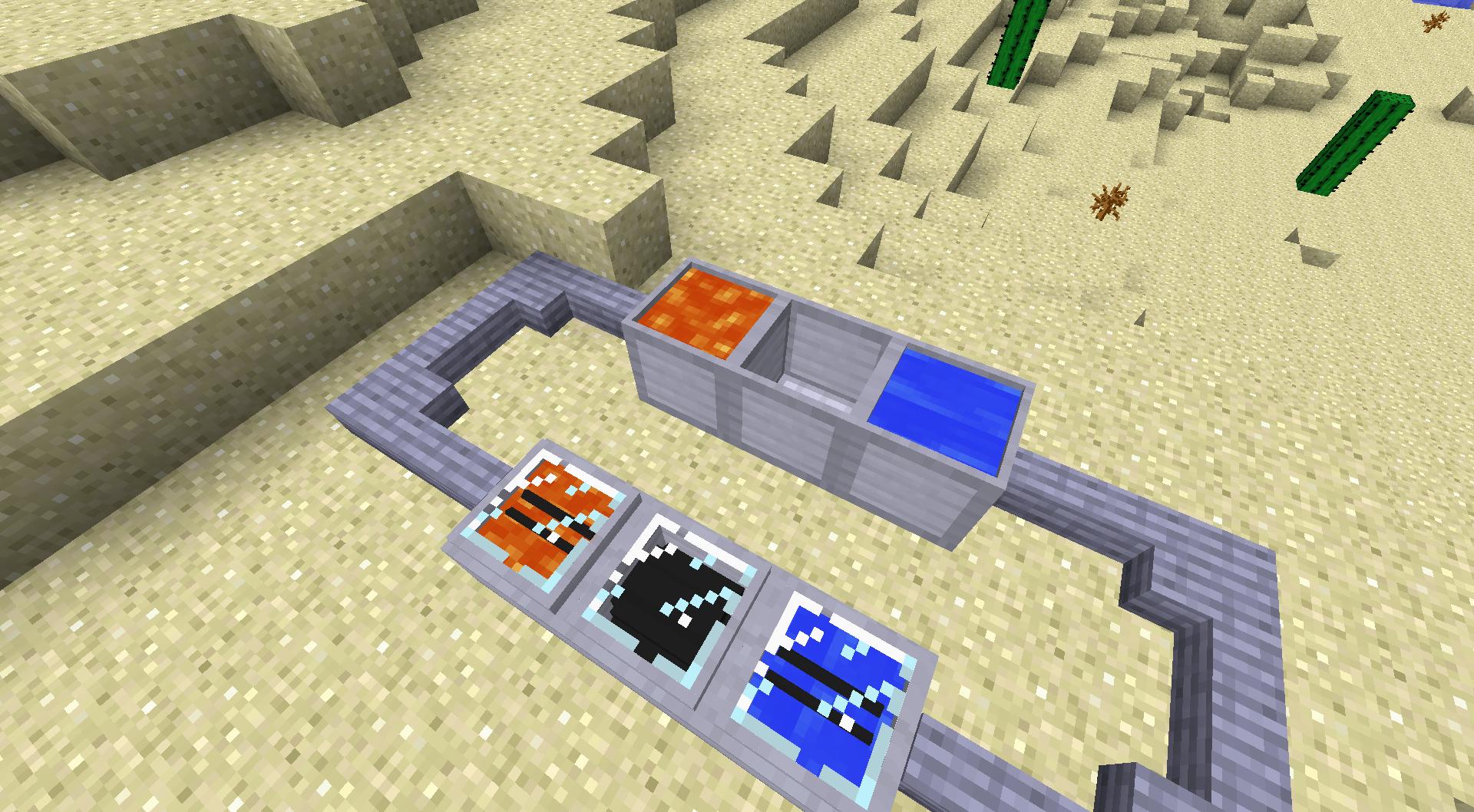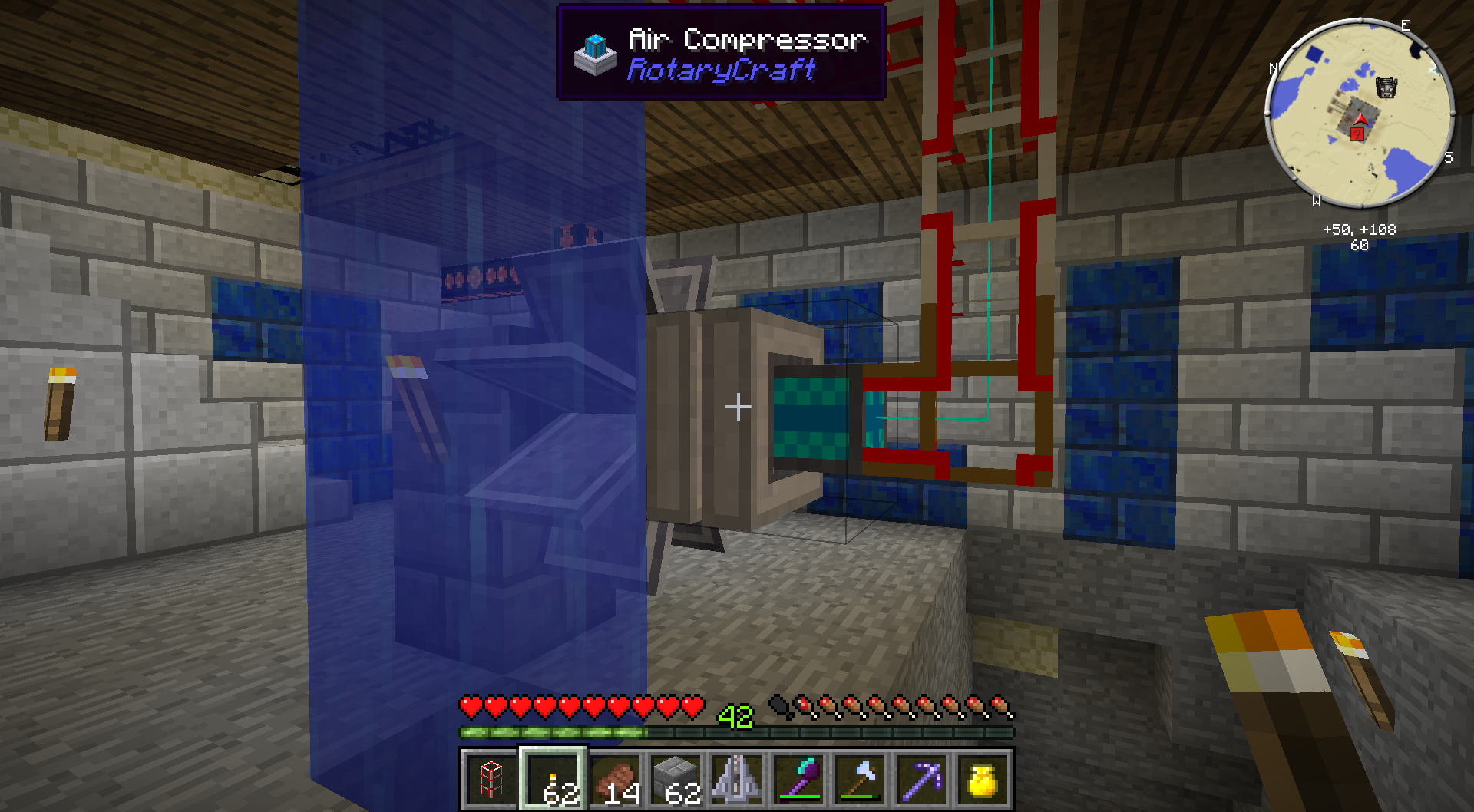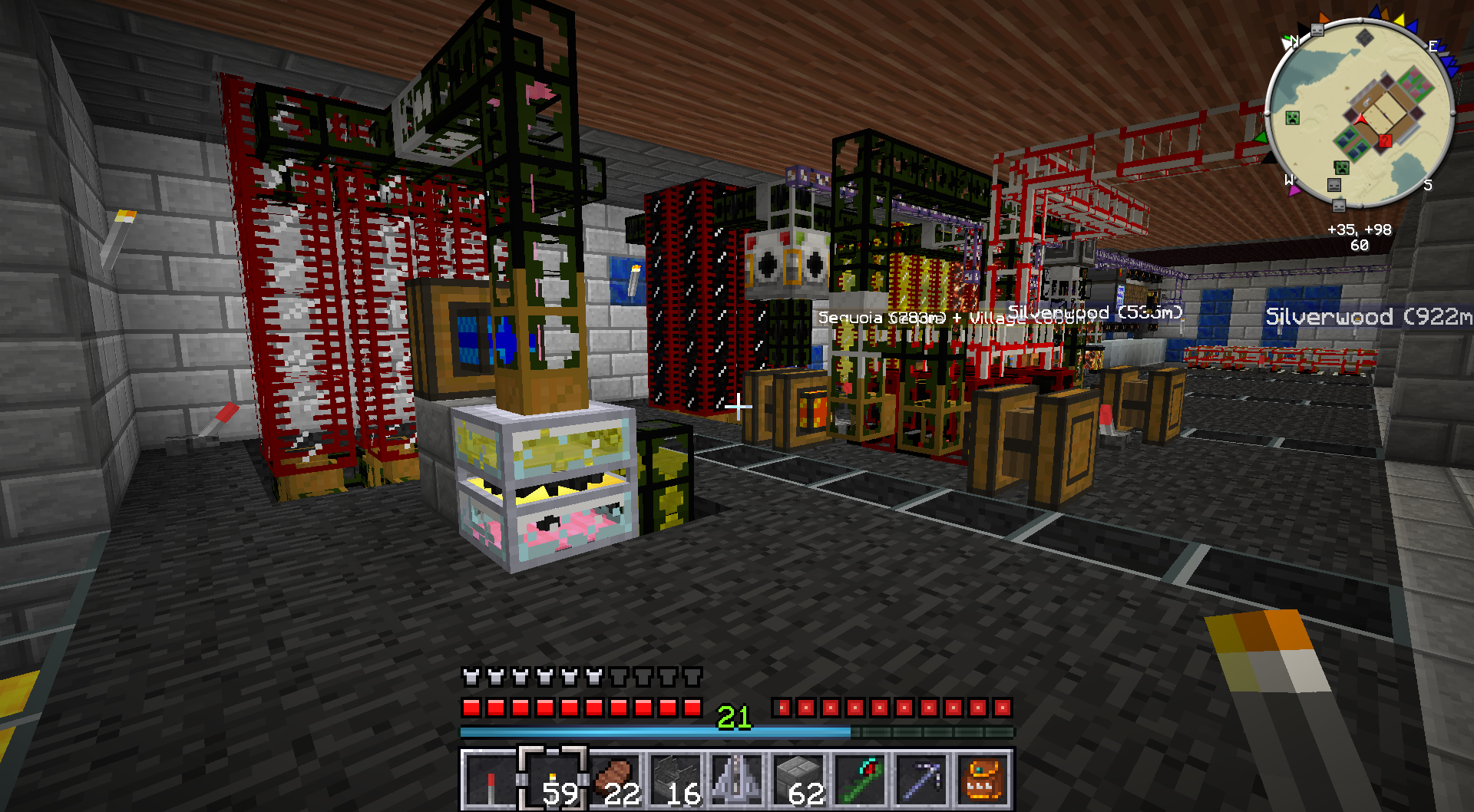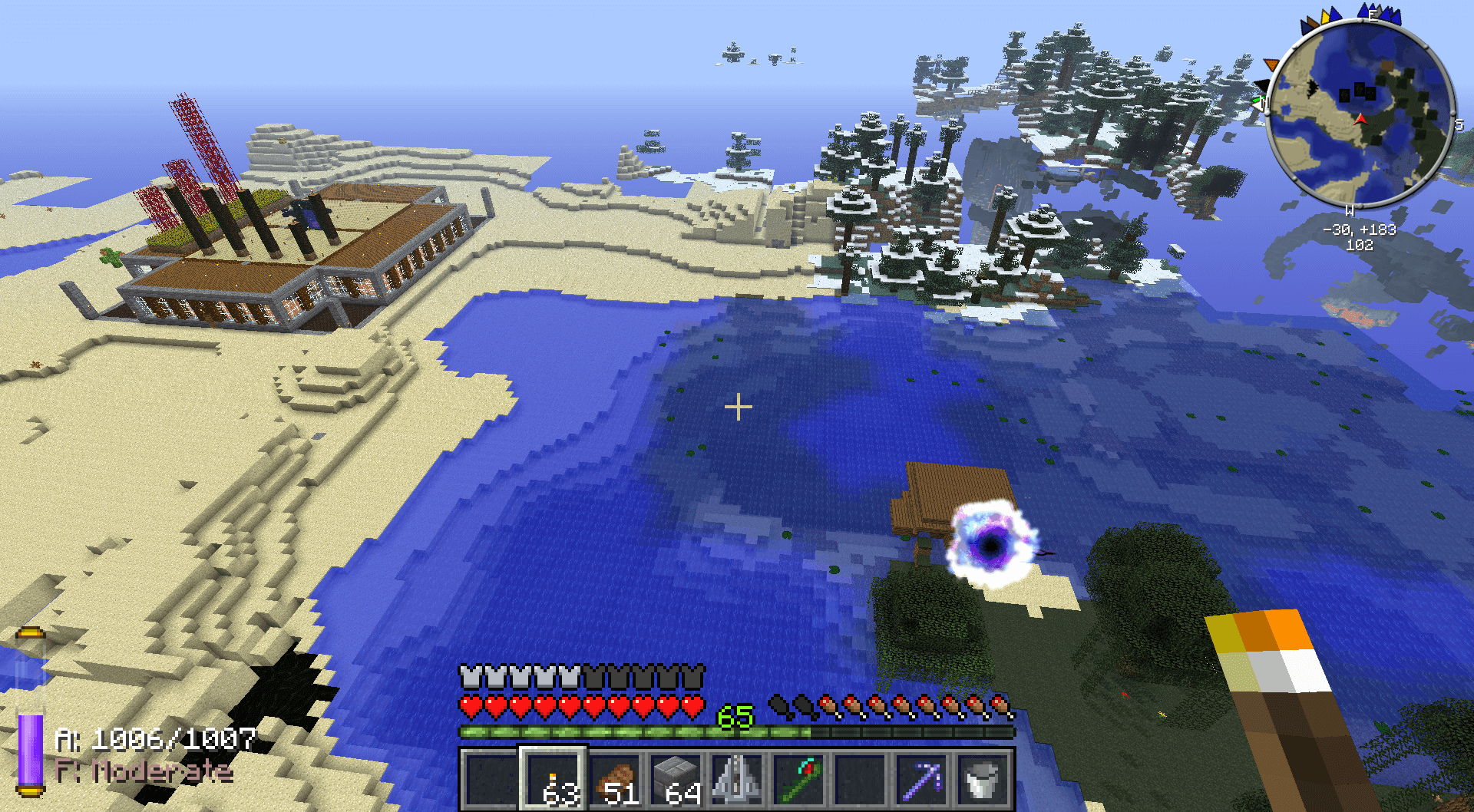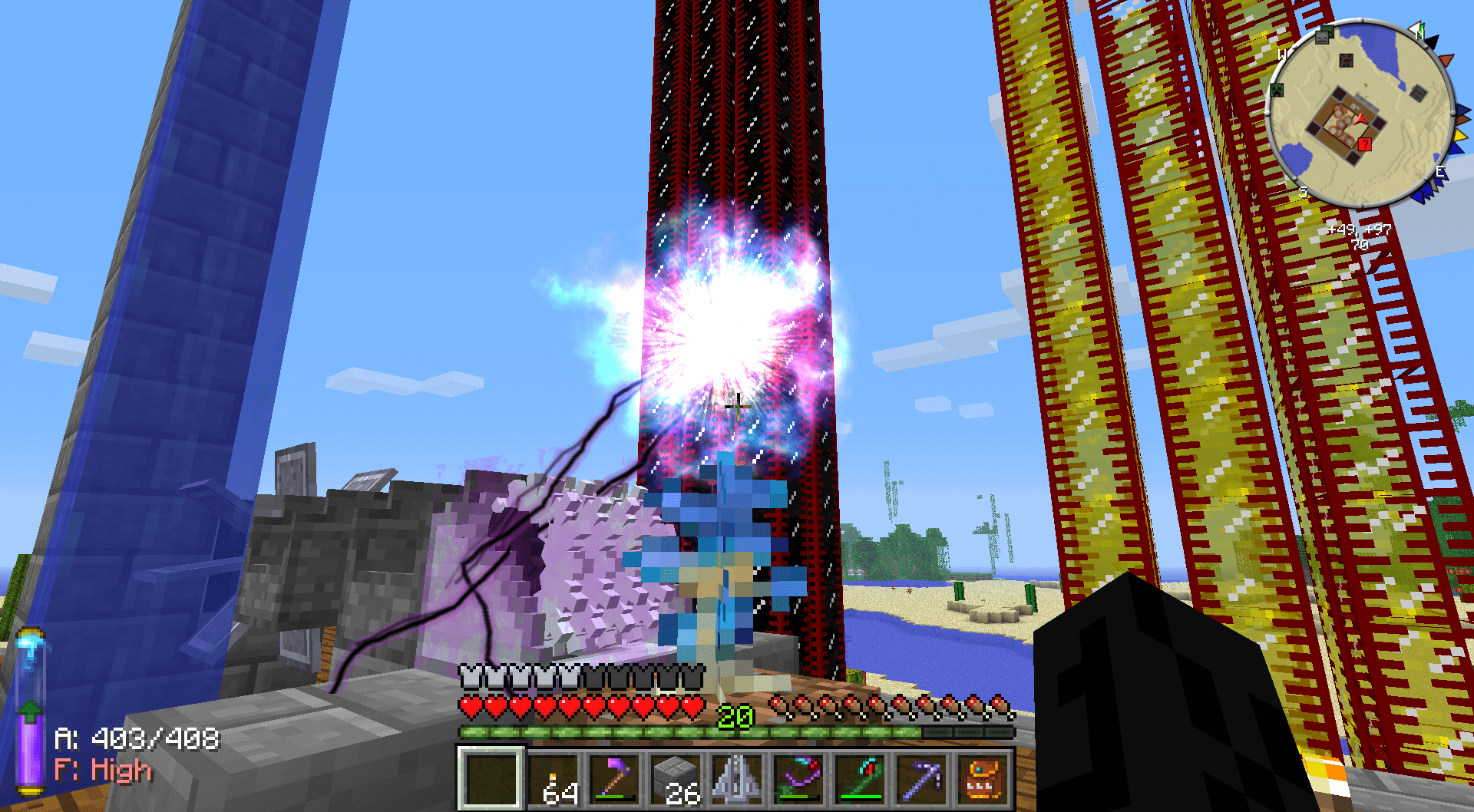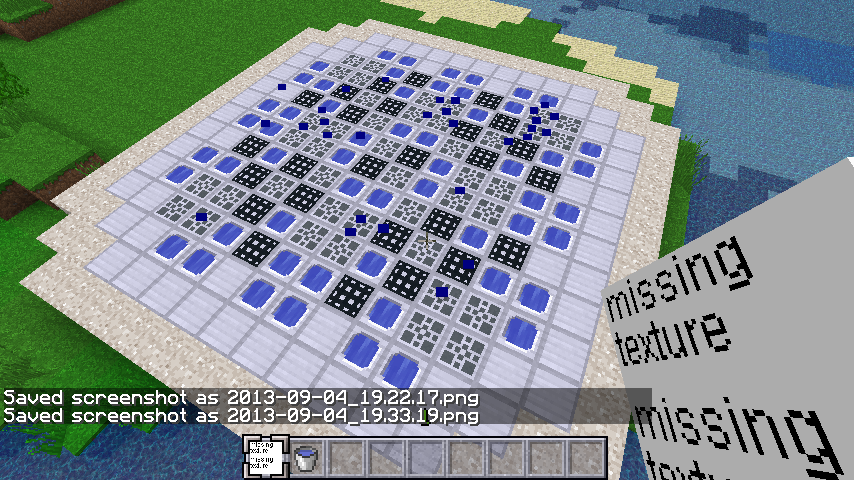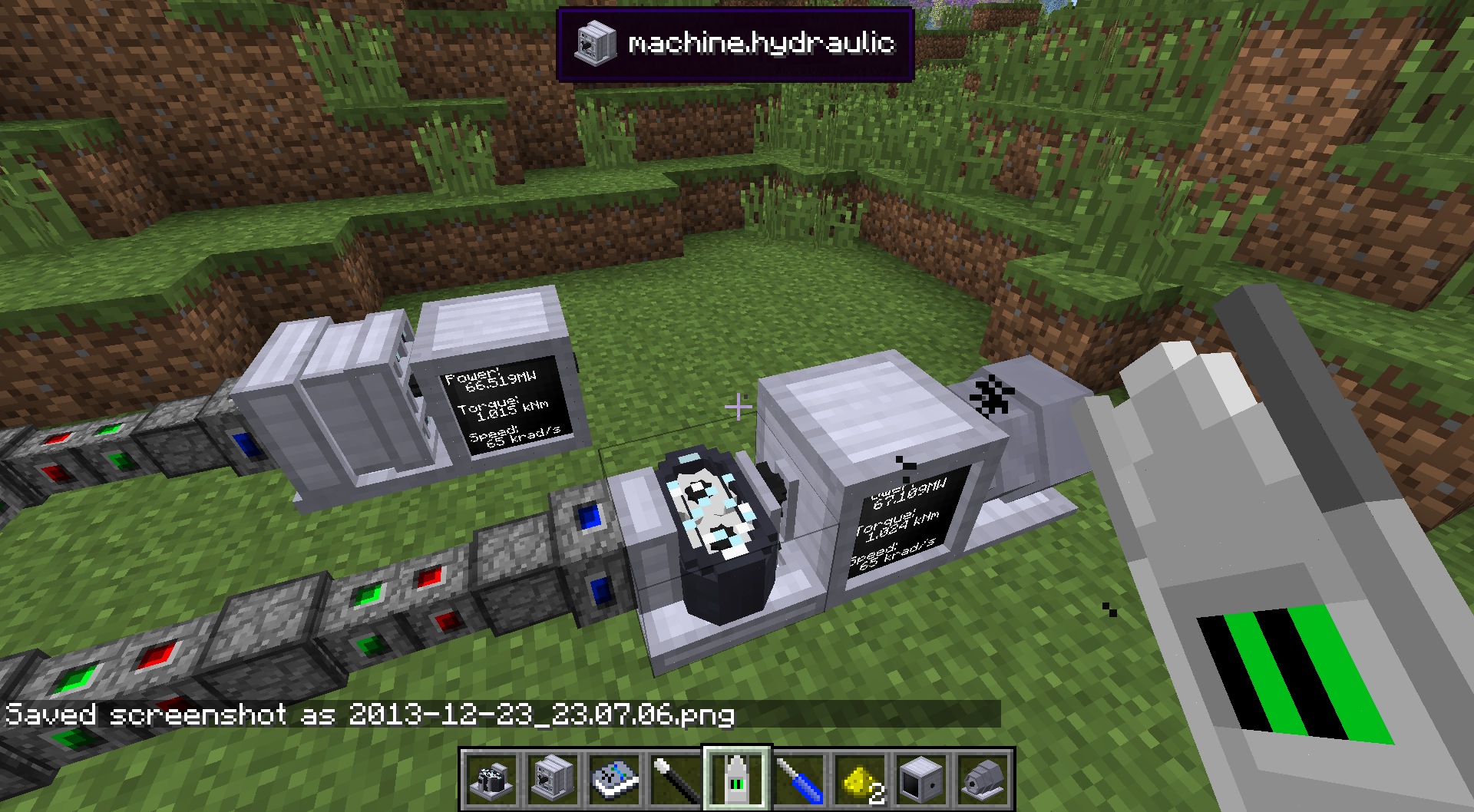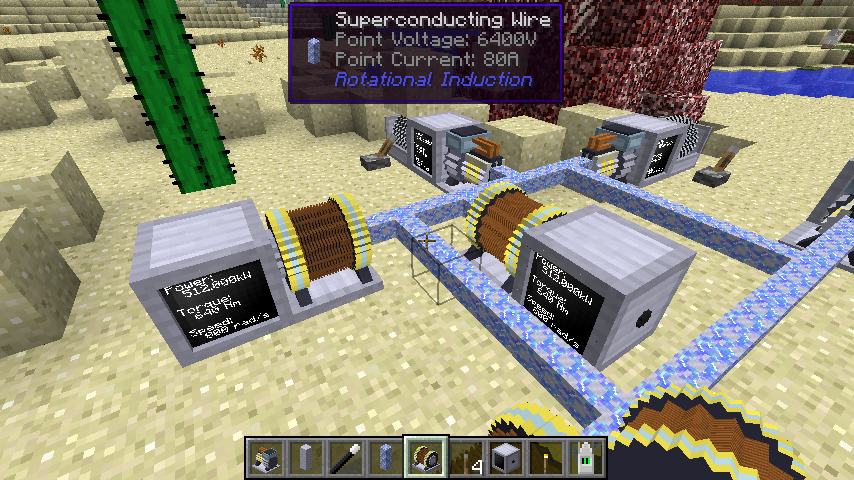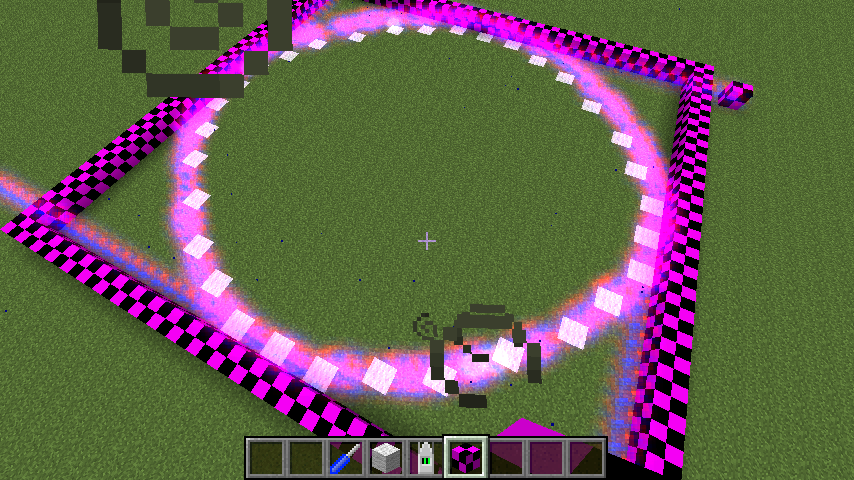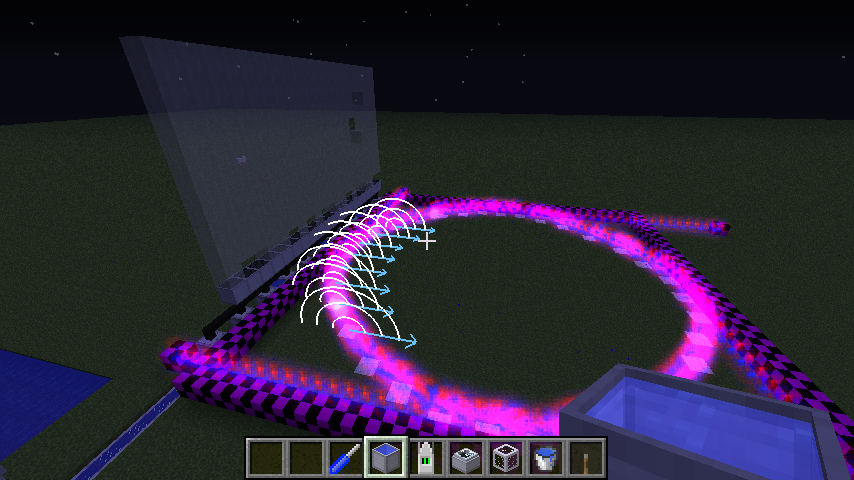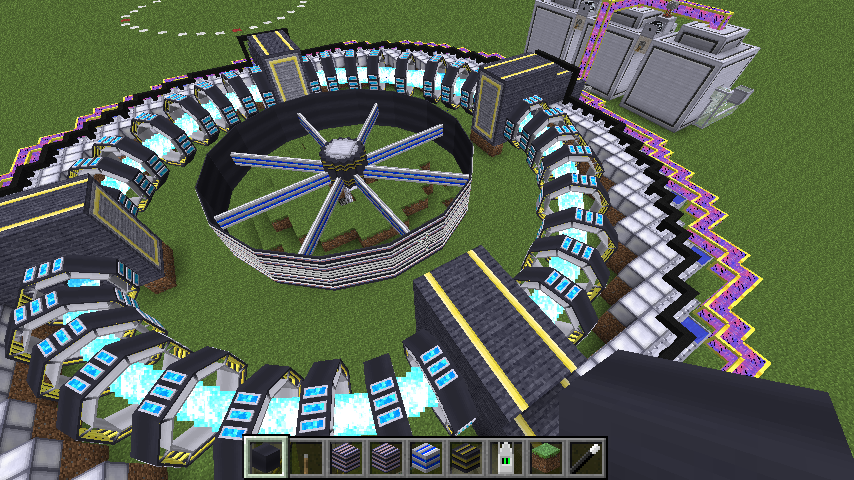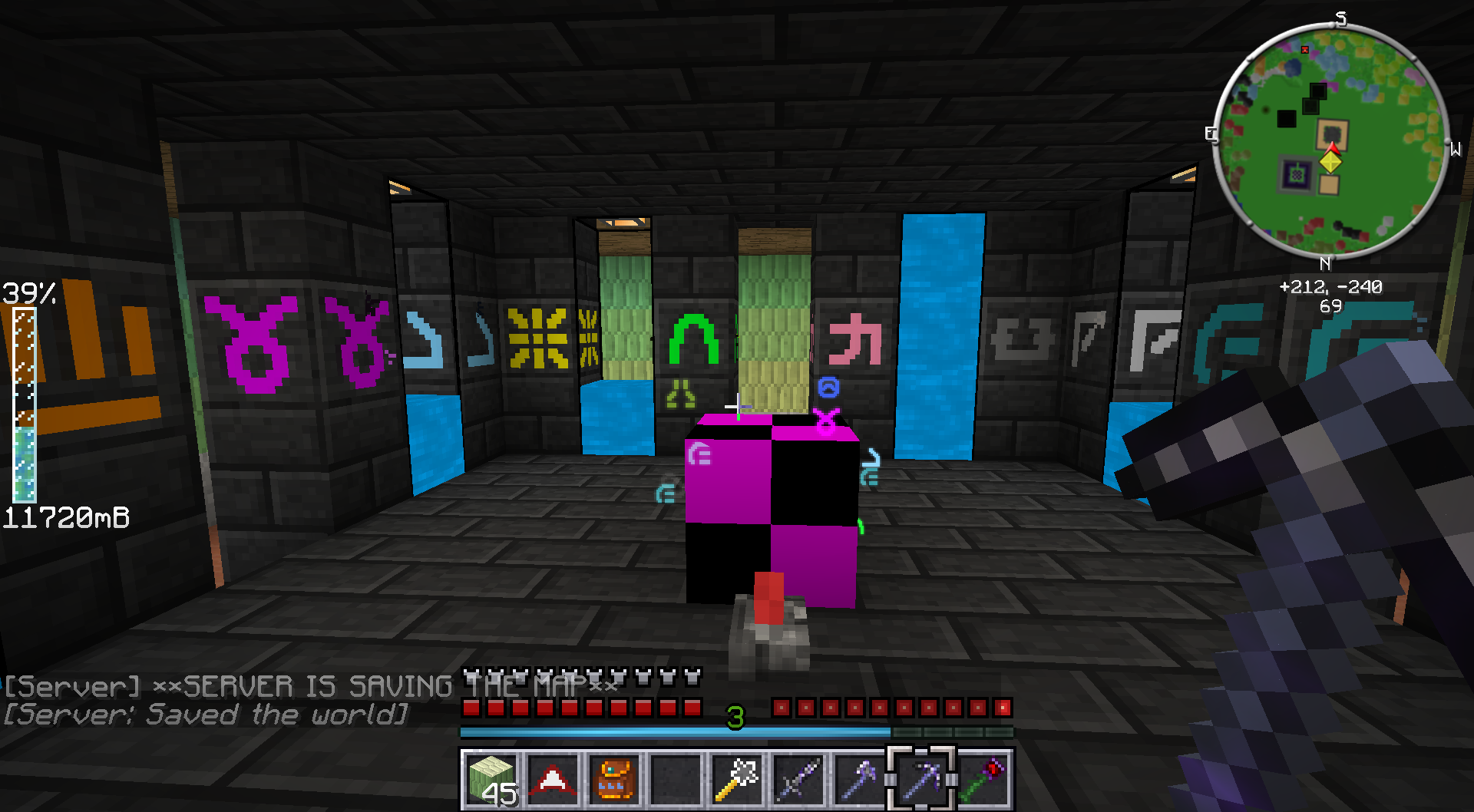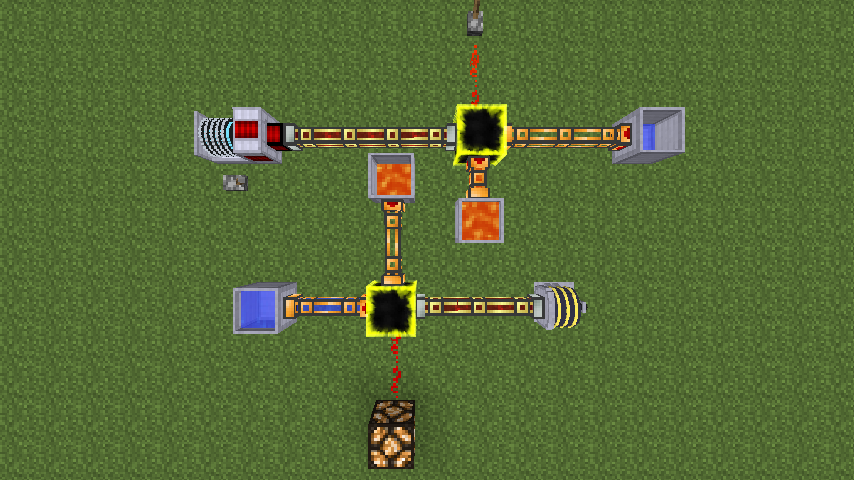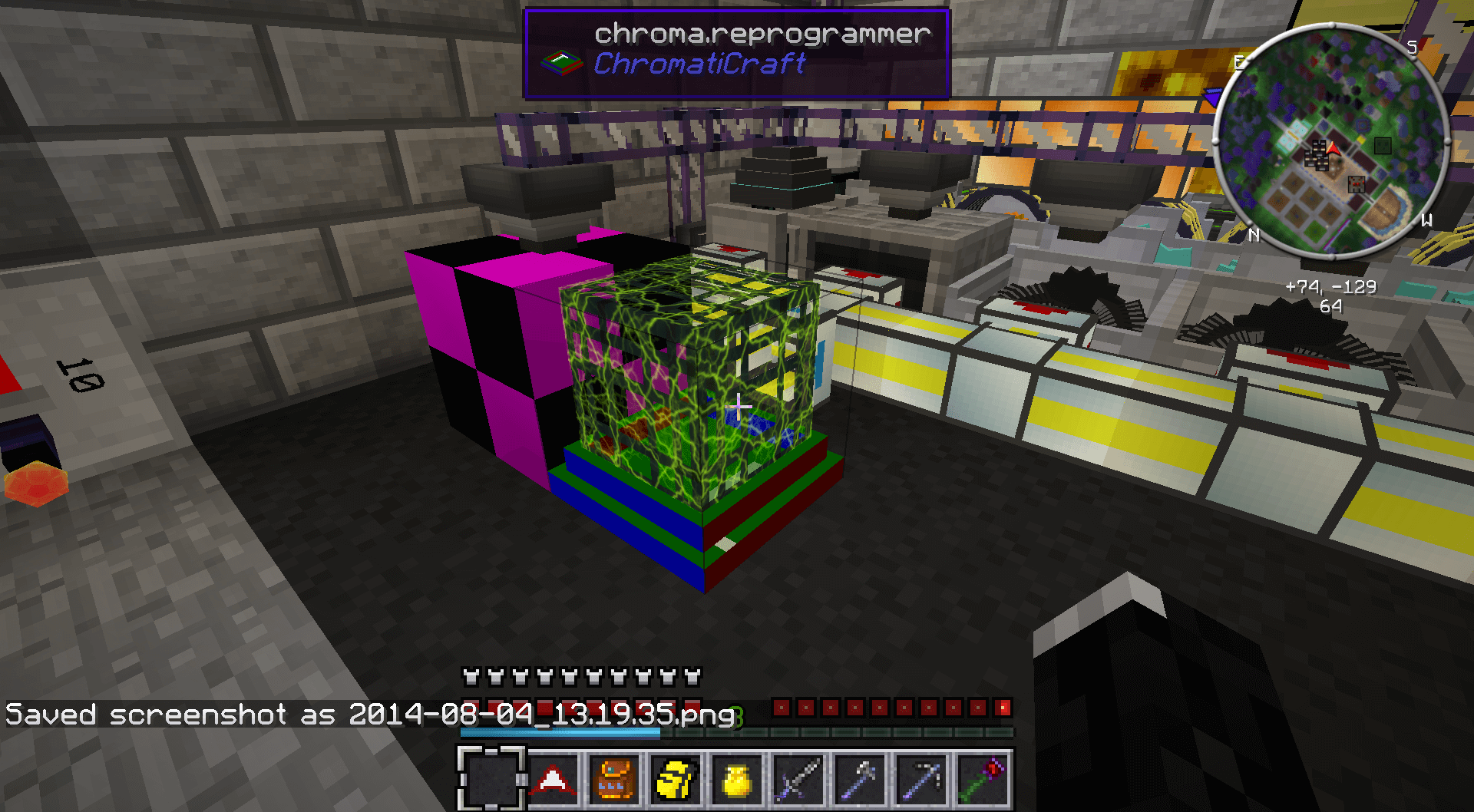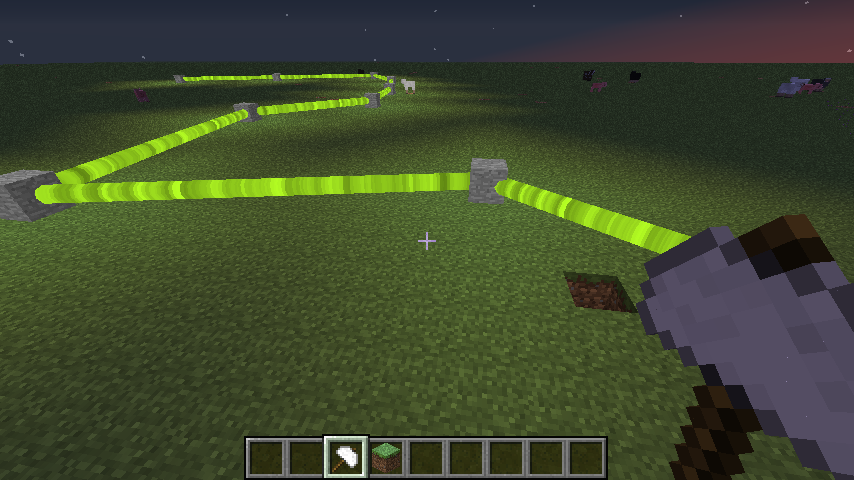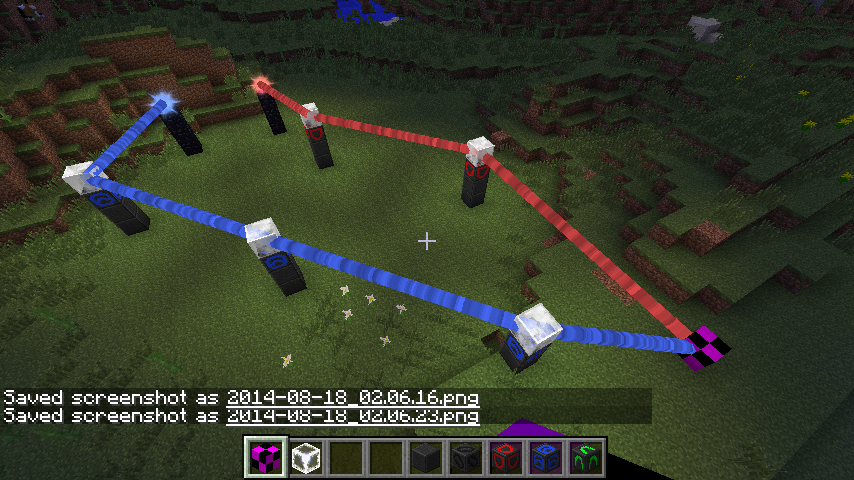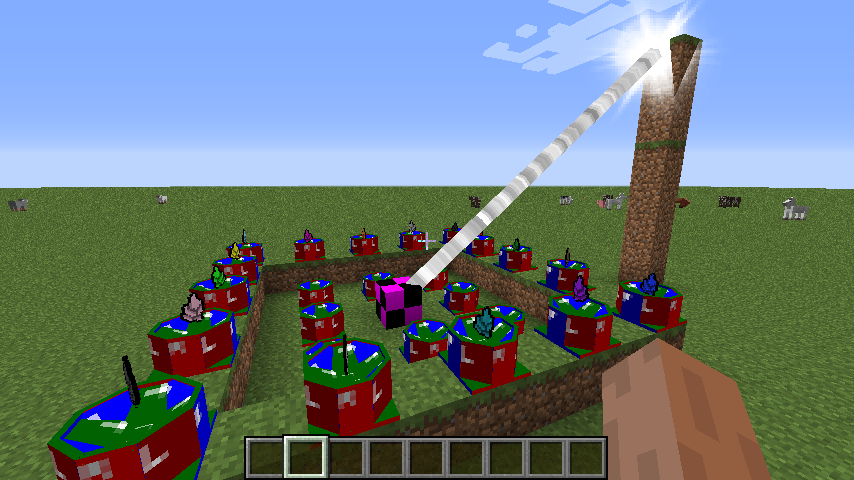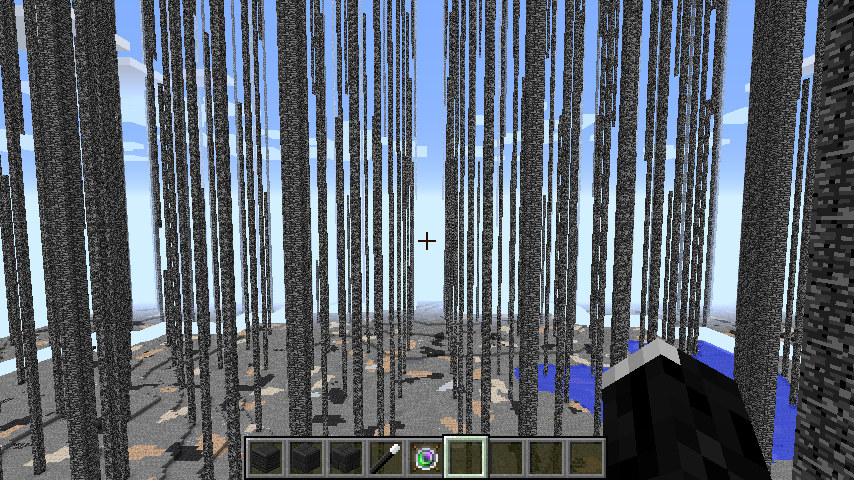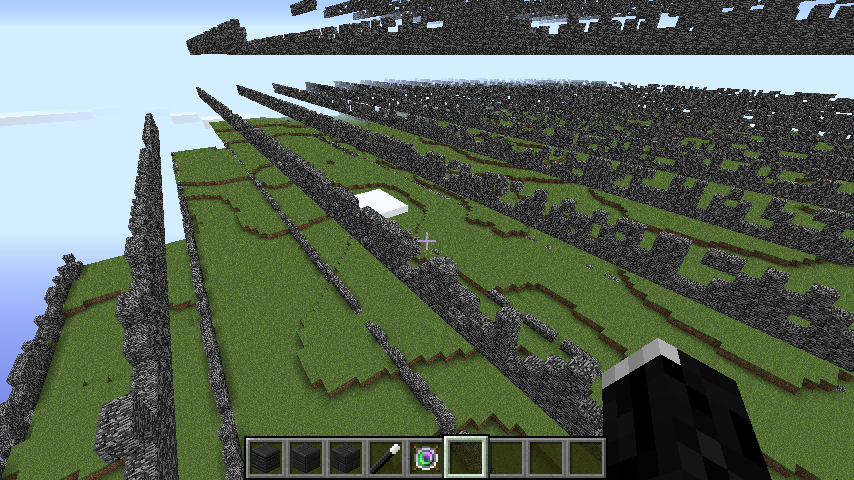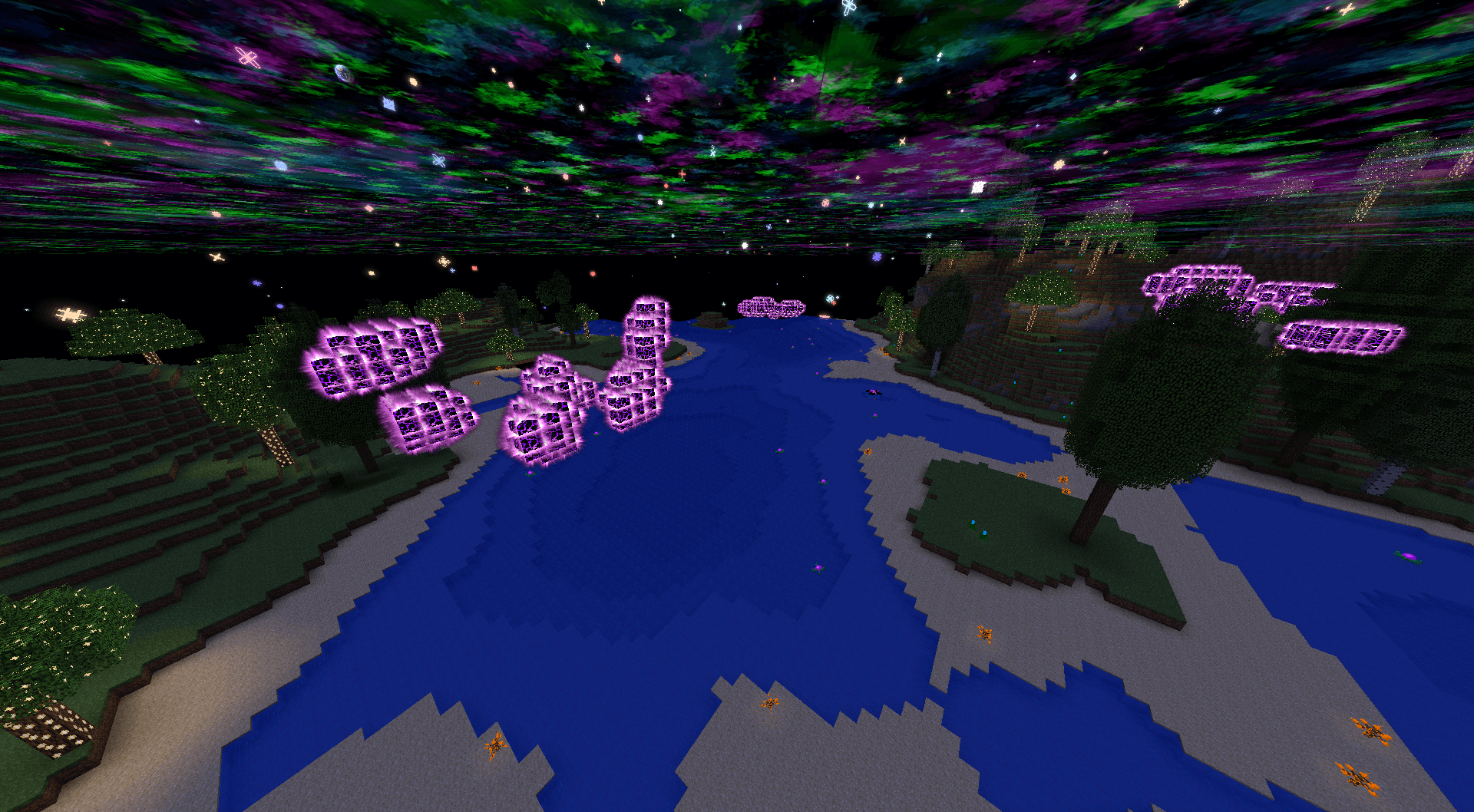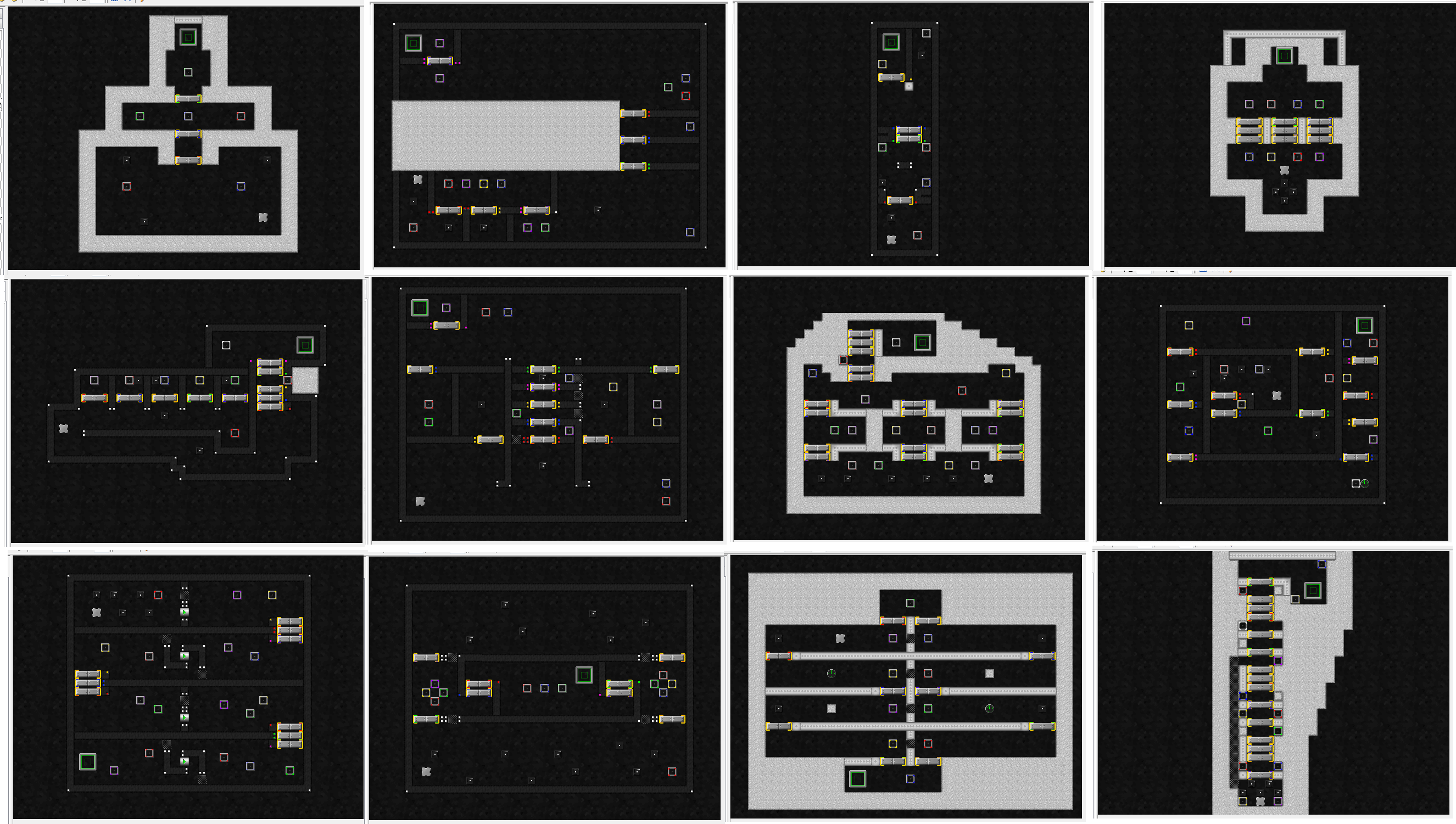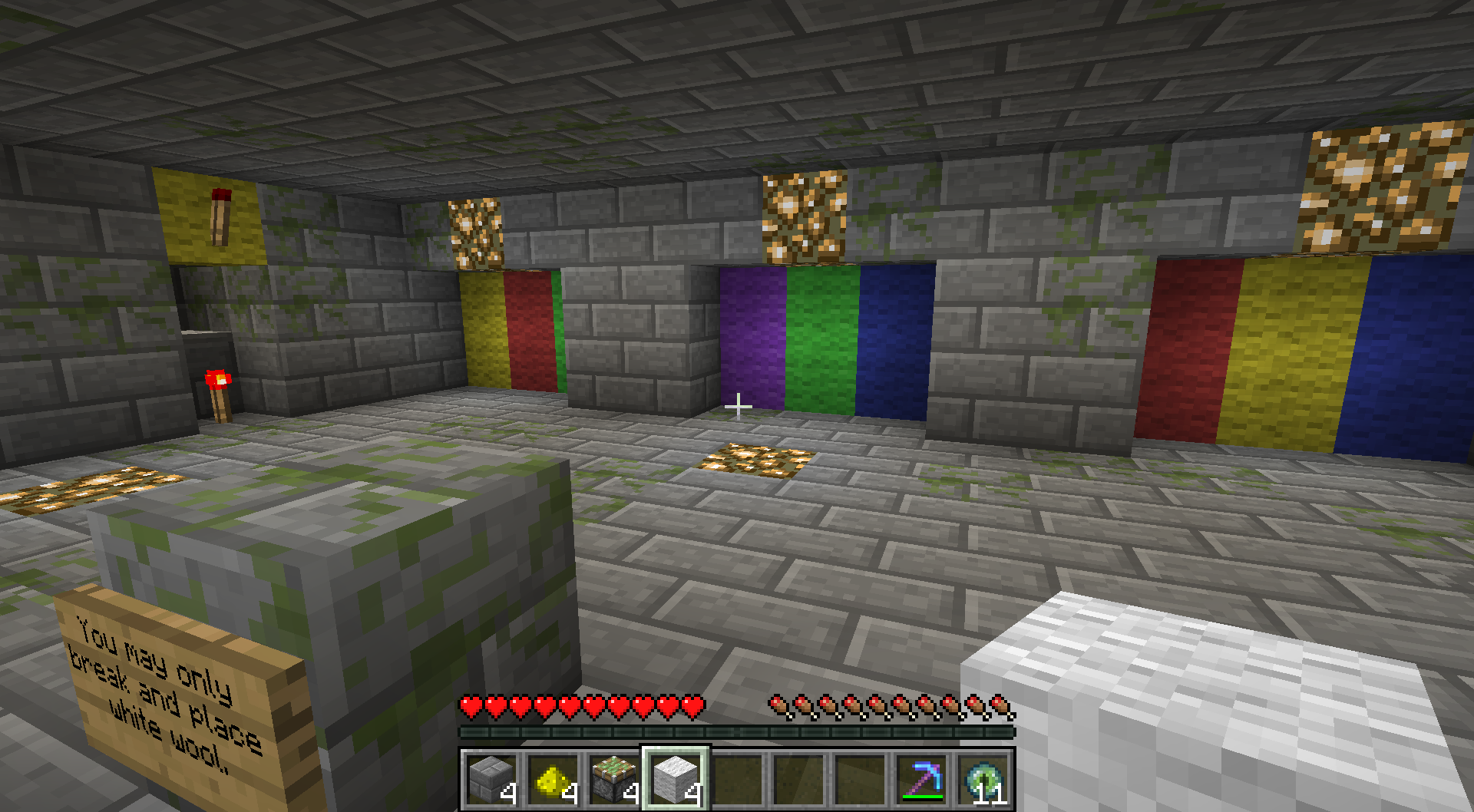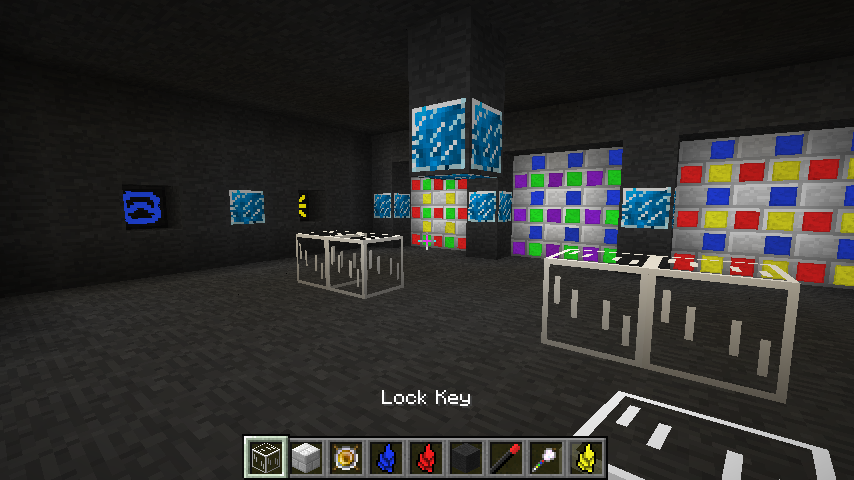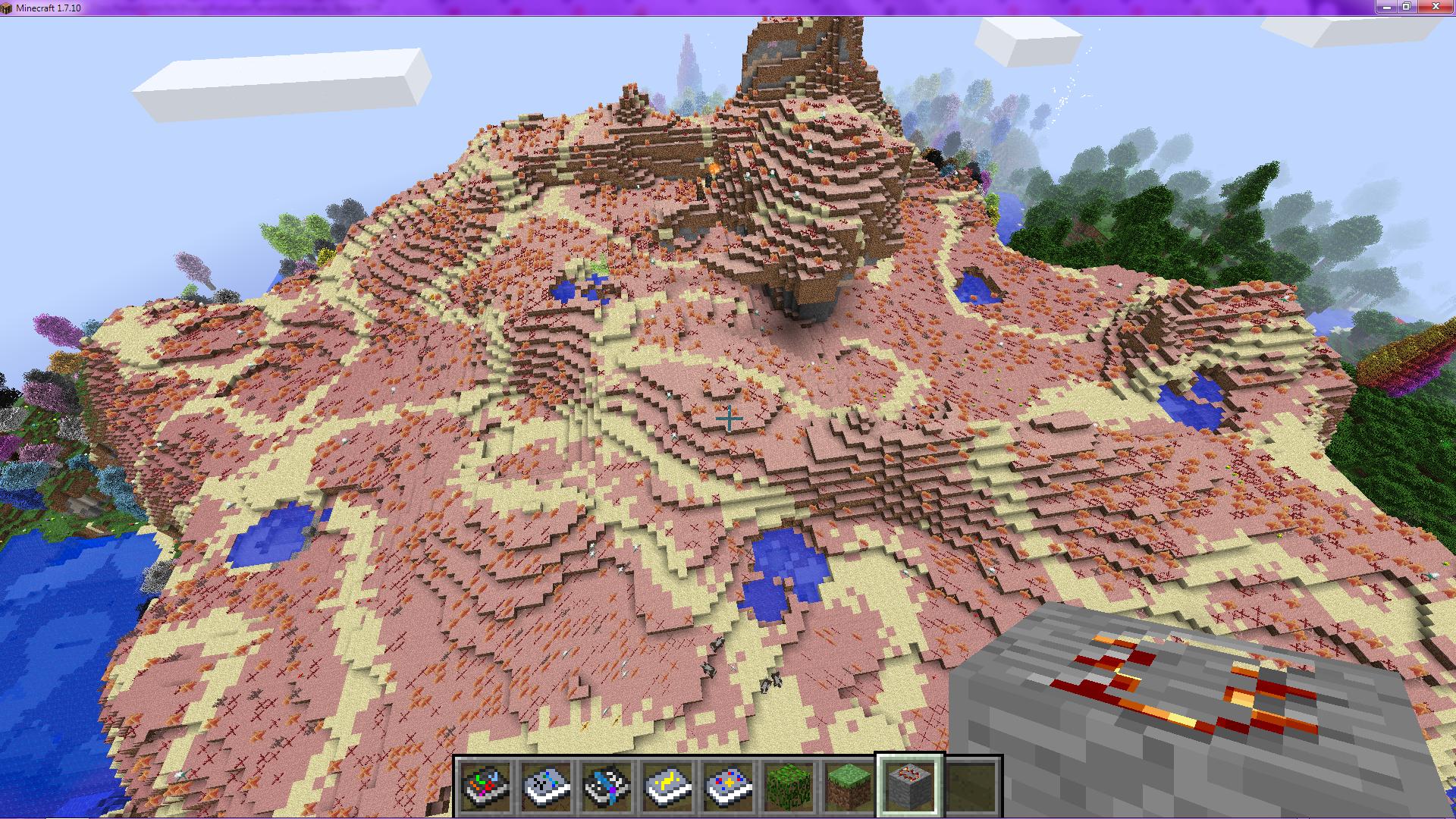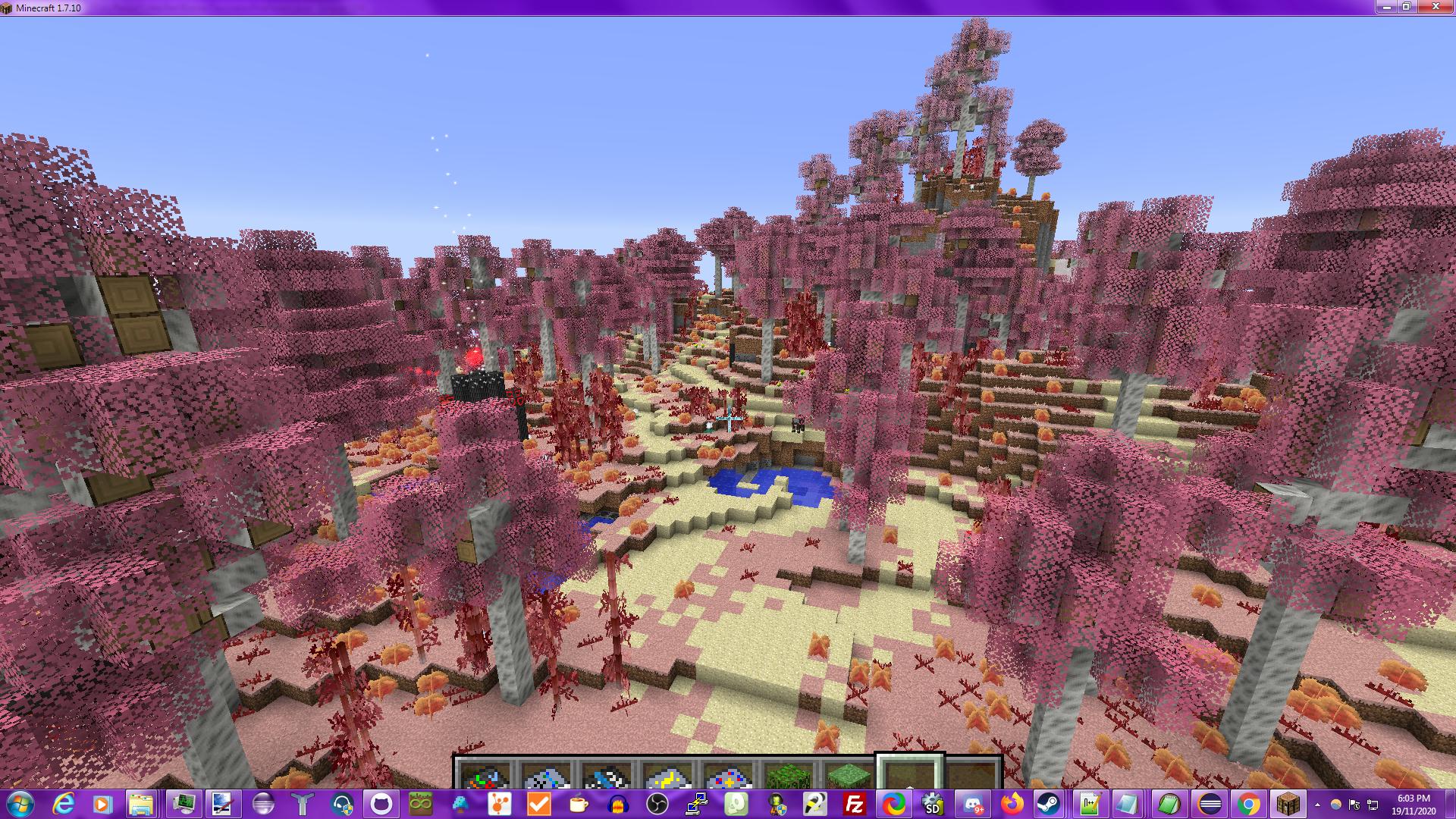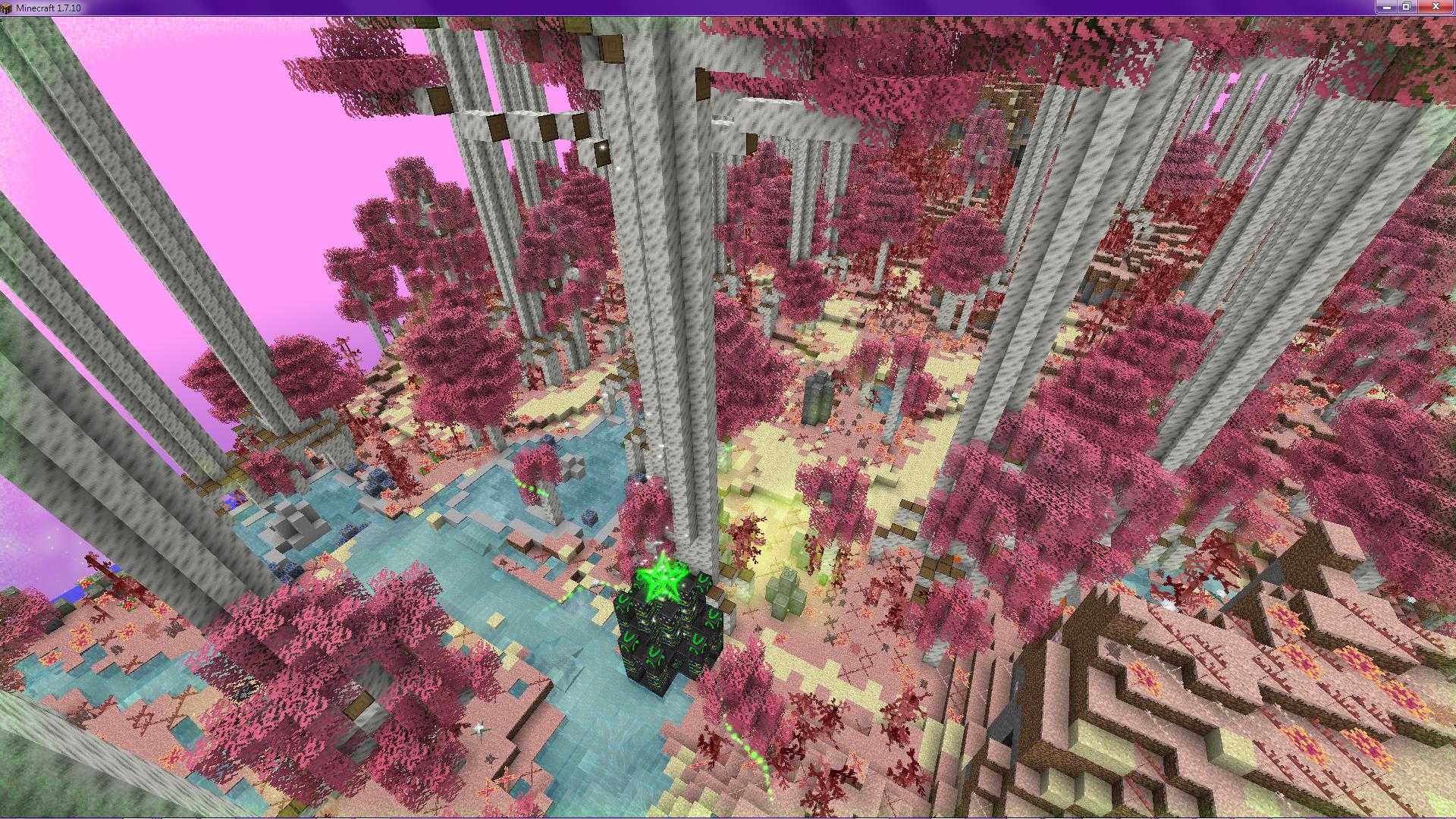It All Begins
I was completely unaware of the existence of Minecraft in any form until 2011, and my introduction to the game was a very strange one; in early summer of 2011, I was playing a random flash game - I did a lot of that back then - and was playing through a comedic reference-heavy "choose your own adventure" type game (though I failed to recognized the vast majority of the references, of course). At one point, the player is tasked with breaking through a wall, and one of the options results in this green thing with a large columnar body and four small fingerlike protrusions at the base. I now recognize that object as a creeper, but at the time, without any knowledge of what Minecraft or creepers were, along with the perspective making it appear to float and rotate in midair, I saw "some green hand-like thing" and thought nothing more of it.I went several months never thinking about it again, until one day that November, it came back to me and I felt curious enough to look it up. After some difficulty - as Tom Scott notes, it is difficult to google things if you have no idea what their names are - I discovered it to be a "Creeper" from some game called "Minecraft". I seem to remember the name or appearance looking very vaguely familiar at the time, but I was unaware enough to make this feel worth investigating. I found an online copy of "Minecraft" - which I now recognize to be Minecraft Classic - and spent a few minutes messing around, digging out caves and watching classic's (in)famous fluid propagation. Feeling that the game was not much to be enamored with, I moved on.
A few days later, however, I decided to look again, and noticed another online copy that looked radically different. This copy was hosting a way to play creative mode in the then-newest game version, beta 1.8.1. (This also means that unlike many of the "veteran" players, I never personally experienced the "alpha days" or what worldgen was like in beta; many times this would confuse me as I saw how different the world looked in various let's plays and screenshots. Indeed, the fact that block lighting was brownish for me and smooth grey for most of this media was a major disconnect that stuck with me for years and ultimately led to that feature in LegacyCraft).
I spawned in an Extreme Hills biome, and got an idea for a random underground "control room" thing. A few minutes into building it, I started hearing spooky noises - which I now of course know to be cave ambience noises - and dug around until I found a cave. I then flew through those cave systems - taking my first ever screenshot of the game in the process - ultimately coming to a circular room, where another often-retold story took place, and set another major trend of mine. I then noticed I was hearing grunting noises, which mildly concerned me (I was not aware of peaceful mode, or the fact I had it enabled). I proceeded to look at the Minecraft wiki page for "Mob", and being unfamiliar with any of them or their spawn conditions, decided that the "Zombie Pigman" was the best match for the sounds I was hearing. This completely freaked me out, and I tunneled straight upwards out of the cave...for all of six blocks, whereupon I saw a random pig running around making noises. Even so, this incident left me with a lasting apprehension of caves, one that continues to this day and is the basis for a great deal of the anti-cave devices in my various mods.
I spent the next week or so just messing around in creative - often with large amounts of redstone, TNT, or both - before deciding to finally start a survival world. This too was on peaceful - which I had since learned about - but it allowed me to gradually familiarize myself with the various game systems. Indeed, I needed it - not five minutes into the game, I failed to know how to break blocks (because instant click-break like I was used to from creative no longer applied), even trying grabbing some sugarcane items thinking "this looks sharp", before I fell in a hole and needed to look up that I needed to hold the mouse button to mine.
That world, while memorable to me, did not leave much to show for it, aside from being my first encounter with redstone ore and void fog, it did not lead to very much and most of the screenshots were of either the chunk hole I dug or the block of cobblestone that was my (very empty) house.
I then spent the next month or so building a "city" in creative mode, laden with massive quantities of redstone to actuate fake power plants and street lights they "powered". In fact, this provided my gateway into using mods, by way of RedPower, the original Wireless Redstone mod (before ChickenBones picked it up and gave it models) and a Sphax powered lamp mod (as this long predated the vanilla redstone lamp).
Playing with Mods
After I got bored of that world, I moved onto a new survival, which started as a non-peaceful world, though as the caves grew more intertwined and massive I could not help but switch it back. This world ended pretty soon after, leading to a replacement world in the newly released 1.1 version, one that lasted a long time and got me even more into playing with mods. Not only did I keep the mods I was using from before, but I added "PowerCraft", a significant techy mod built around conveyor belts and "crystal dust" powered mining machines.

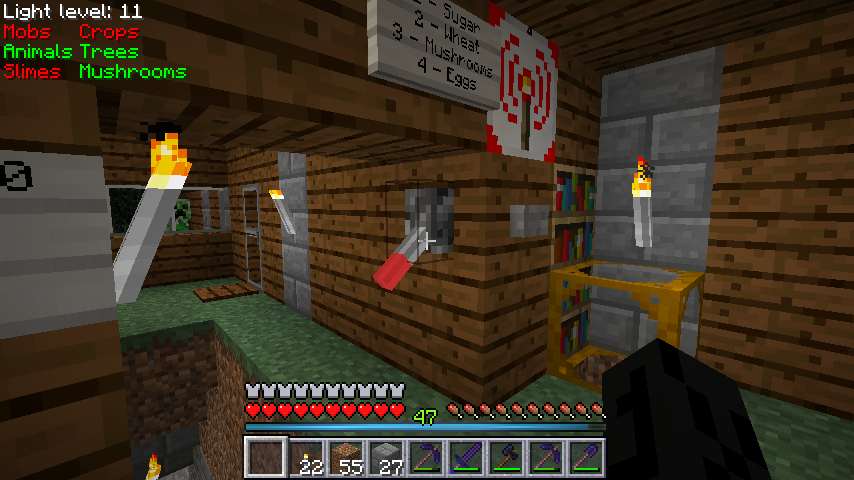
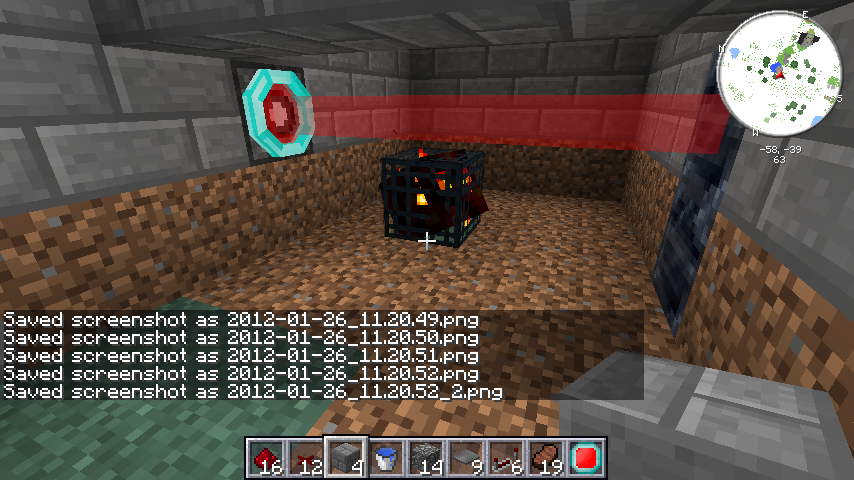
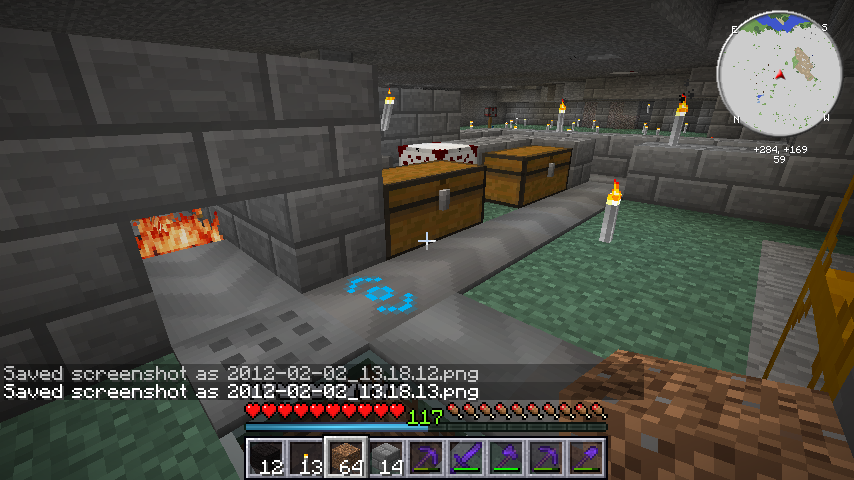
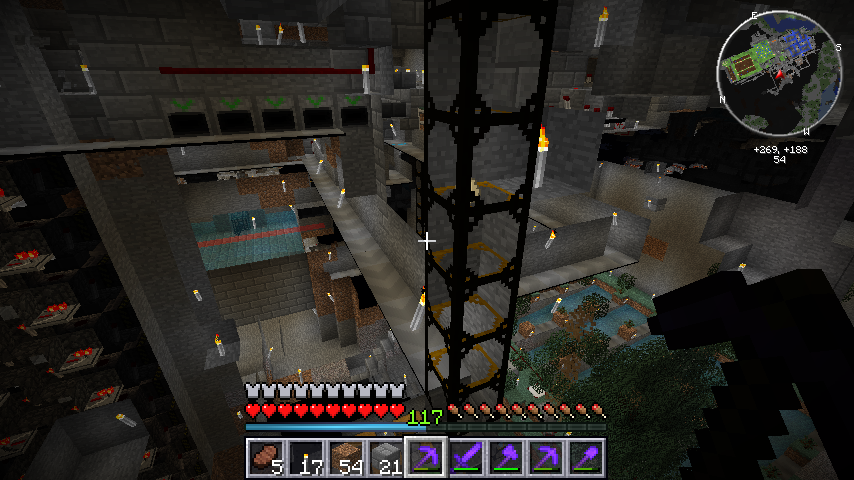
A handful of screenshots from that world showing various pieces of PowerCraft or other mods being used to automate resource collection.
In parallel with this, usually during breaks between my classes, I designed a redpower calculator, though that was not well-received as most people seemed to feel that the inclusion of redpower made it a trivial task (something I still vehemently disagree with). I also made a redstone-heavy puzzle map, with nine logic or thinking puzzles for the player to complete. Two of these were to be adapted into ChromatiCraft several years later.
I also messed around with the "Custom Stuff" mod, which I used to try to add a couple basic items to the game.
Multiplayer
The above two things concluded at roughly the same time, and after a couple months of abortive playthroughs - including a very brief and even more poorly-conceived idea of becoming a Minecraft let's-play Youtuber - I decided to try multiplayer MC for the first time that May (2012). That went poorly; I spent about a week getting banned from a dozen servers because the admins were convinced that I must be spawning things, because they could not fathom the automated redstone contraptions I had built to farm crops or other materials that I would then sell to the server shop.I ultimately found a tiny little private server running 1.2.5, and in the few months that that lasted - it was taken over by another admin who wiped the save and rebuilt the server around his own clique - I built several more giant redstone contraptions.
After that server was taken over, me and a couple others created our own 1.3 vanilla server, which lasted for many months, and during which I spent most of my time making yet more redstone contraptions, notably a giant trap system in the long tunnel leading to my base.
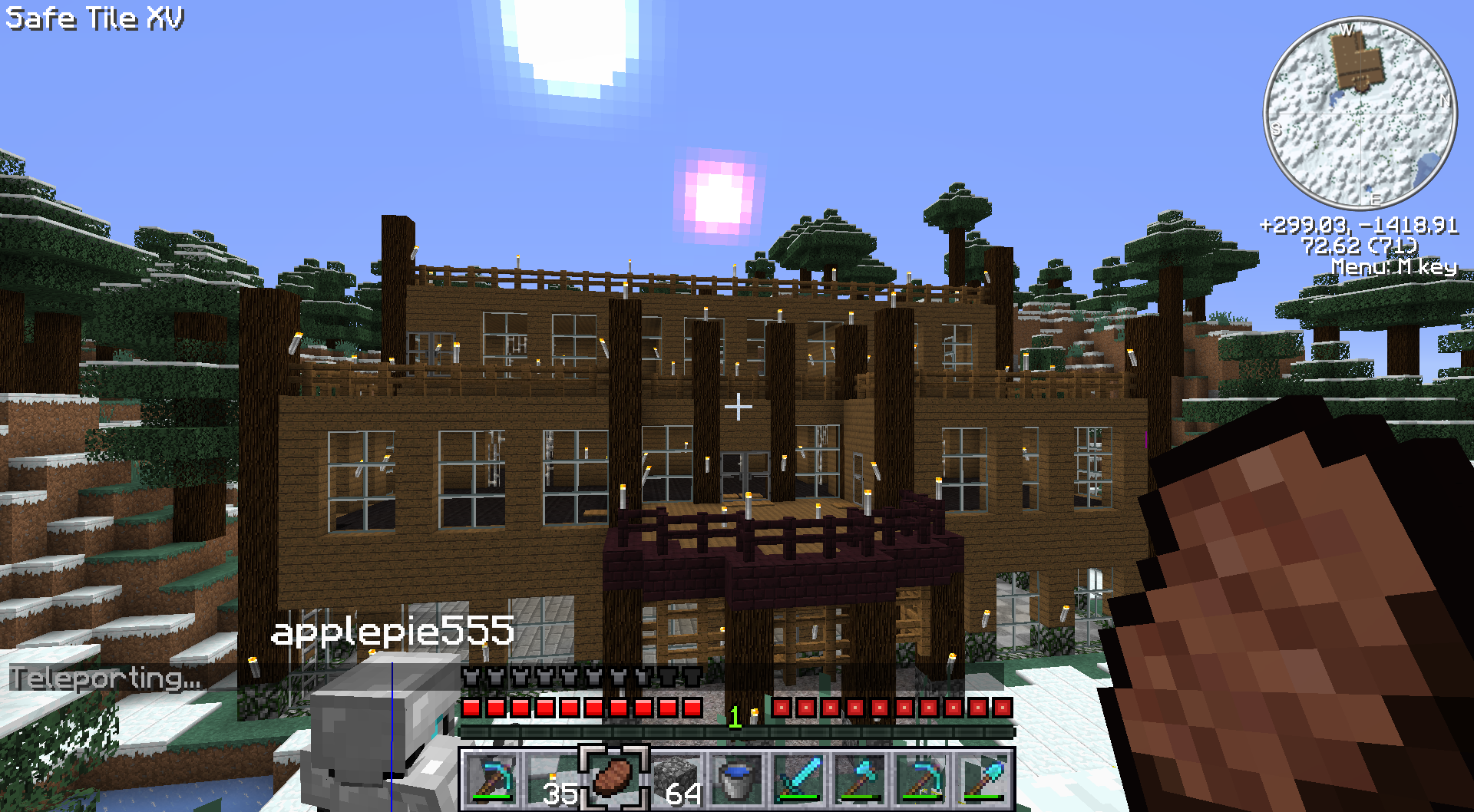
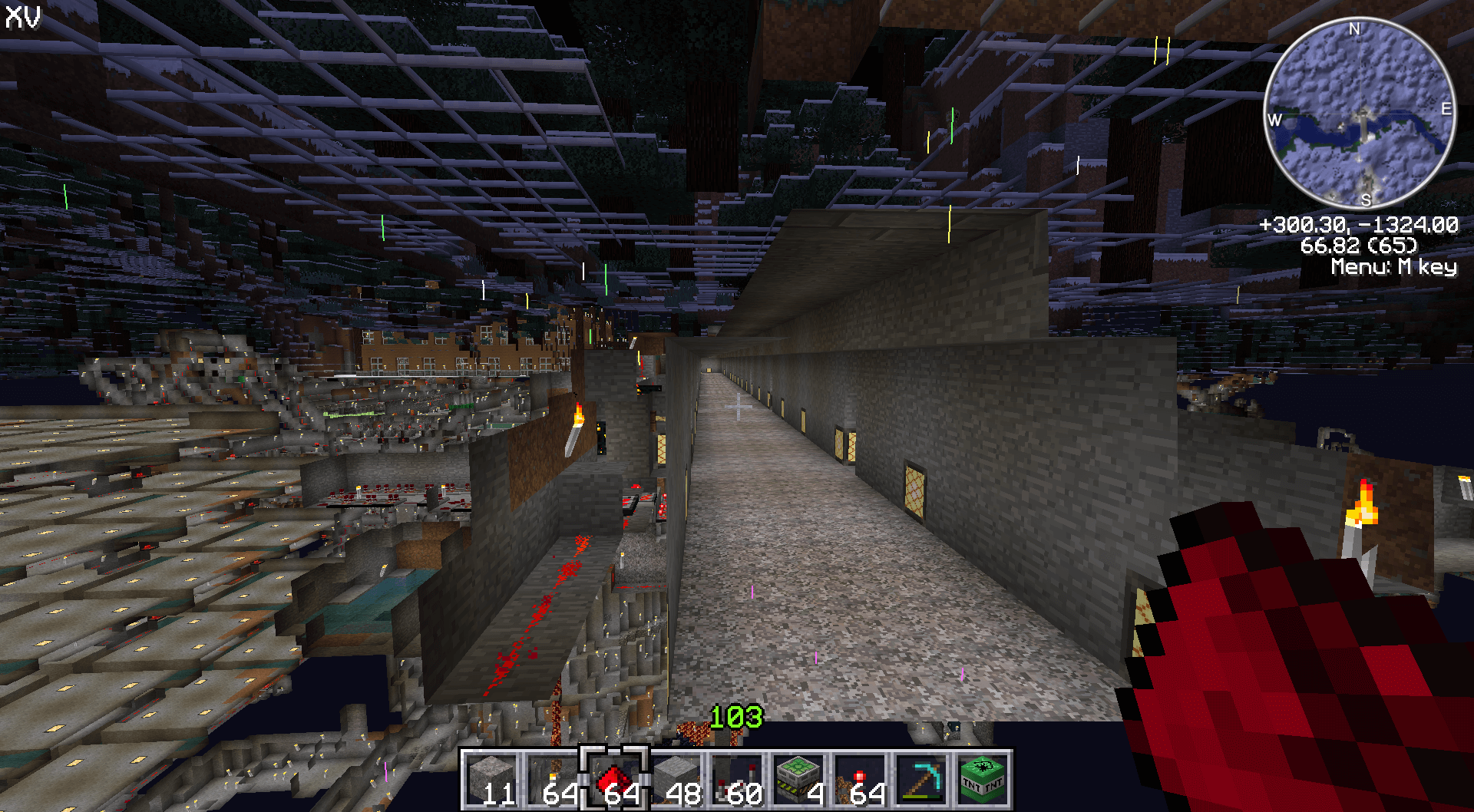
Me and the server host standing in front of my base, and the tunnel leading to it, showing some of the redstone.
A Happy Accident
A few days into the Christmas break, one of the other people accidentally crashed the server with careless use of WorldEdit //fillr (recursive fill with blocks), and with the host many hours behind me (Pacific time), we were all facing hours of downtime. To alleviate the wait, another person - someone who I still speak with today - shared with me a copy of Tekkit, one of the original heavily modded packs for the game. This was my first experience with that degree of modding for the game, and while several mods did not grab my interest at the time, a few - notably BuildCraft, which I fell in love with in a way that has me still using it in a major way to this day (much to the confusion of my peers who view it as an outdated, obsolete, relic) - did.Introduction to Modded
I spent a few days playing around in creative test worlds with various pieces of tech mods, with a heavy focus on BuildCraft, at which point I decided to make a derivative of the pack and play a standard survival world, my first ever that was modded in that way. I used that mod extensively along with a few others.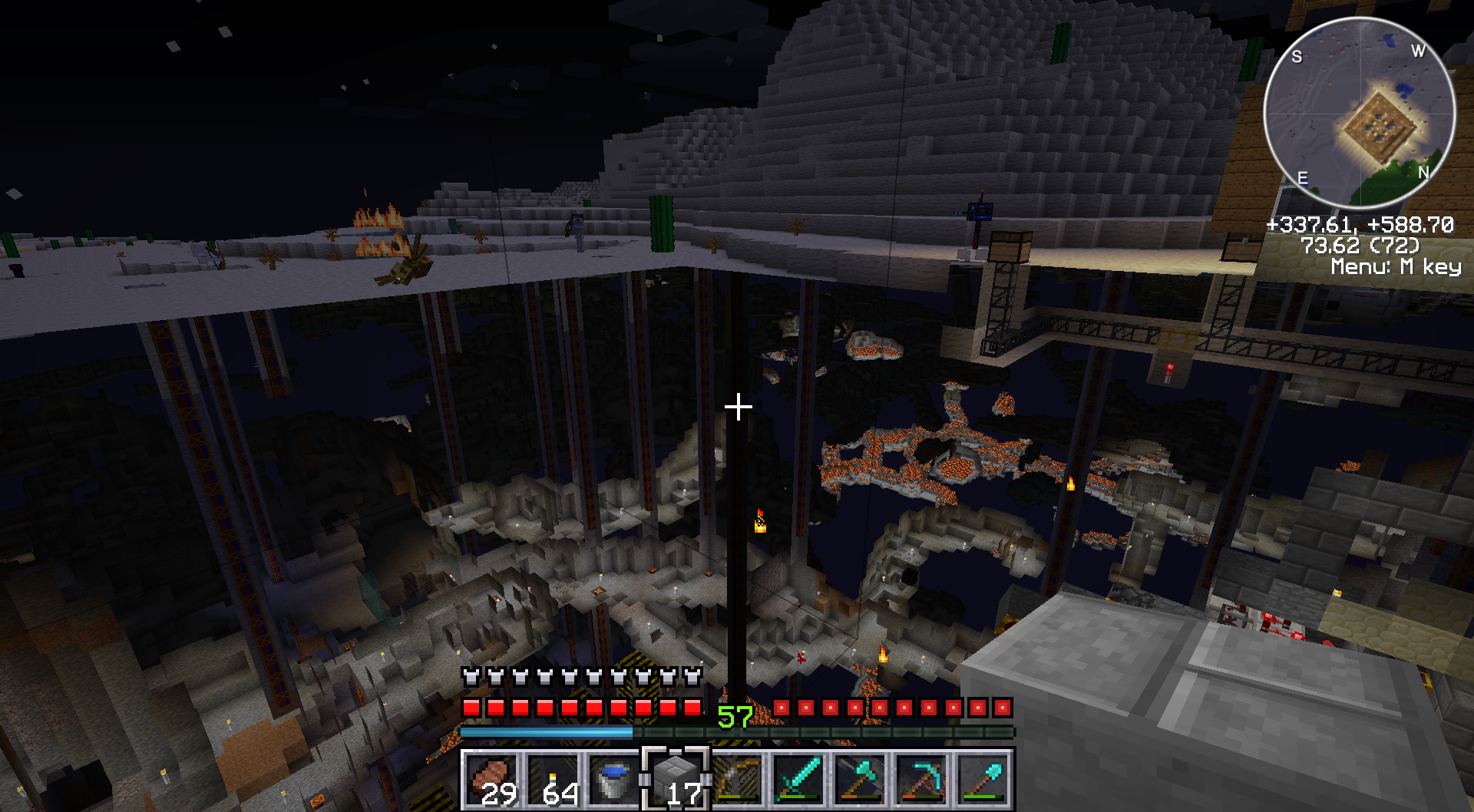
Have I mentioned I hate caves? Also, this was the inspiration for the RC pile driver, and why I call it a "cave assault weapon".
During the course of this playthrough, I tried using Custom Stuff again, this time to make a "lava ingot", to allow me to move lava from the nether to the overworld (as there was no fluid teleportation ability in my pack).
Spurred by this success, I tried to use CustomStuff to address another idea of mine: renewably producing BC oil, which was normally worldgen-only and thus tedious to continually acquire. My plans were to make a "Nikolite furnace" (to finally give a use to that RedPower material, which had seemed largely useless for years already), which could convert sugarcane to - ultimately - the oil, inspired in a large part by the (then fairly new) Periodic Videos entry on a similar process.
This outstripped what CustomStuff was really made for, so I ended up deciding to learn modding properly to make this mod possible. This required learning Java as well as MC modding (as the quality of my code at the time will clearly demonstrate), and this activity, combined with the playthrough in the BC-heavy pack, occupied much of the winter break. Halfway through I even started using Forge - previously it was simply Risugami's ModLoader - which set the stage for me to enter the modern modding ecosystem.
While I never ended up actually using my (half finished) "Ethanoil" mod, I had grown tired of constantly replacing cheap low-grade stone tools ingame and had settled on a new mod idea - bedrock (ie unbreakable) tools.
Fortuitous Roadblocks
Those who know my Minecraft mods already know where that idea is going, but first another pair of lucky accidents had to occur. Firstly, my original planned "Bedrock breaker" machine to harvest bedrock dust for the infinite tools, as well as its power source were to be modelled after the style of BuildCraft; I implemented the machine, and engine, and a wire. However, my complete lack of experience with Java or Minecraft modding at the time left me unable to realize that idea; nothing worked remotely right. With that, I ended up giving up, shelving the project, and going off to play KSP for a month.That set the stage for the second stroke of luck. As stated before, this occurred during my university program, and this particular month coincided with a class that involved - among many other things - discussions of geartrains (this was the slide on screen at the time). I was fortunate enough to have this spur an idea for the power system for my "abandoned" mod idea, and that evening went home and converted the engine to produce speed and torque, and implemented shafts and several ratios of gearboxes. Such was the birth of RotaryCraft, the mod that started all of what followed.
Modding In Earnest
At the time, I was unfamiliar with the majority of the modded ecosystem - Tekkit lacked many of the now standard mods, and many others that were included I had largely ignored. As a result, the early phases of RotaryCraft's design were done with pure vanilla plus maybe BuildCraft or RedPower in mind. This meant that most of those early blocks - for example the Aerosolizer, Pile Driver, or Reservoir - were either very unusual and with limited application, or very similar to content seen in many mods. There was also very limited expandability and mod support; for example, the pump and reservoir were only coded to accept lava or water..
The gradual addition of new blocks and tools - sometimes based on suggestions (notably the Extractor as a four-stage ore processing machine), sometimes to fill often niche applications I had envisioned - continued until that June, where I was invited onto a small modded server along with a few other people I knew on the FTB Teamspeak.
Entering the Ecosystem
This server had a much more "modern standard" (at least, modern for late 1.5.2) pack, and was the environment where I was confronted with many of those mods, including ThaumCraft, Twilight Forest, Applied Energistics, Thermal Expansion, TConstruct, and BiomesOPlenty.RotaryCraft was pretty swiftly removed from their pack - much of the "Old Guard" of that community did not want to touch a mod like it - but I ended up starting a new singleplayer survival world with a derivative of their pack, and the duration of this world was the time in which a great deal of the fundamental compatibility and interfacing with other mods was added. Notably, this was when I implemented a more generalized fluid system (though actually switching to the Forge fluid system was not to come until the 1.6.4 update that September), the ModOreList and ModWoodList registries that form the backbone of the Extractor, Woodcutter, and more, and various mod handler classes to directly reference their blocks, items, and mechanics. This also saw the creation of the first power conversion blocks.
One other notable feature of that world that led to a new feature was the fact I had unwittingly set up my base within short range of a dark node, which was creating unpleasant effects around my base. After reading online about TC3 node mechanics - in particular node movement and merging, and the fact that silverwoods could create pure nodes, I implemented the ability to use the RC woodcutter to farm silverwoods and thus pure nodes with which I hoped to neutralize the dark node.
During the course of this world, I also revisited some short-lived testing/learning mod ideas from the prior winter. First was an old "learning to use metadata" mod with multiple rock types; this became GeoStrata, though at the time it only had rocks (lacking Onyx and Opal, and only smooth, cobble, and brick variants) and crystals. Next was a "creature below the bedrock making scary noises" mod I had gotten the idea for when messing around with Tekkit (and hearing similar noises in the void created by MAtmos), which of course became VoidMonster.
Towards the end of that summer, I started work on another mod, one to address the fact that scaling RC power beyond a few hundred MW was generally a pain. This of course was the start of ReactorCraft.
Major Developments
After a few months of several very short-lived saves - though one right before the 1.6 update led me to create EnderForest and DyeTrees to aid in farming those materials - I started a new major playthrough that December; This was the world that would become the subject of my 1.6.4 tour video series.The first months of that save saw many other major developments that led to where my mods are today:
First, I got RotaryCraft and ReactorCraft included in a number of new FTB packs, massively expanding my playerbase and finally letting the community at large know the mods existed. While this came as a double-edged sword (major version control issues, plus the fact a large number of the players of these packs had no interest in RC "as it was meant to be", and frequently were actively disinterested in doing much to learn the mechanics), it nonetheless enabled me to make major headway in establishing these mods as well as create new ones.
This was also when RotaryCraft started down its modern path of a proper techtree and progression system. I had grown increasingly unhappy with how "cheesable" the mod had become (see above), especially if one creatively abused things like hydrokinetics, industrial coils, or - especially - the recently-added magnetostatic engines. Players from this era will probably recall the plethora of tutorials that largely amounted to "just plop a magnetostatic on it", such as is referenced by this lovely blog series from that time. As a result, I started adding several more explicit tech gates and limitations on the most abusable features. V10 brought limits on industrial coil capacity and output - the explosions resulting from that led to some people being so upset that they still remain hostile to me today, eight years later - and the hydrokinetic lubricant requirements. V16 brought the first nerf to the magnetostatics (fixed torque and reduced speed cap). V20 added the tiering system to those engines and other power conversion blocks. Several versions added more focus on gating machines like the pulse jet, friction heater, or blast furnace.
Major new content also made its debut during this era:
Fairly early on, I ran into some headaches splitting power among the fans for my farms, so created the Shaft Power Bus. That proved glitchy and hard to use, so I tried again, this time with a dedicated hydraulic-based mod purely focused on transport and distribution of RC power. Early design issues and some revisions reshaped that to use electricity, becoming ElectriCraft.
Not long later, I finally had some ideas on how to finally realize a desire I had had for several months - the culmination of the RC and ReC techtrees, and the final solution to whatever power needs any base could ever have. This of course was the fusion reactor, which had been on hold because I had not known how to proceed without invoking electrical machinery (something I both then and now actively avoid) for plasma containment, how to handle plasma injection into the torus in a way that felt appropriate, or how to actually implement the fusion system and the means to extract energy. Early in 2014, I had finally devised solutions in the form of the toroid and solenoid magnets, the injector multiblock, and the neutron capture system respectively. Development of the reactor then proceeded swiftly.
Some other new features were added that were small at the time, but players familiar with my mods will see what they set in motion:
One, I wanted a more powerful variant of the effect-giving crystals that had been in GeoStrata for a few months, and so invented "Potion Crystals".
Two, I had gotten an idea for a pretty render, involving a crystalline block with a glowing core, with little flecks of light moving around inside. This became the guardian stone, which was also added to GeoStrata since it seemed most thematically compatible with those magic crystals.
Three, I expanded upon DyeTrees, adding large "Rainbow Trees" that had healing and anti-evil magic powers.
Finalizing 1.6.4
In the late spring and early summer of 2014, I put out the last versions for 1.6.4, knowing the 1.7.10 update was on the near horizon. RotaryCraft and ReactorCraft gained some additional balance patches - notably the turbine and magnetostatic lubricant requirement, as well as more blast furnace usage - and some new mod integration with ThaumCraft thanks to my being shown the TC4 infusion system. I had also recently tried bees for the first time, wiht the intent of getting into tree breeding. GeoStrata got 16 colors of bee to match its crystals, and, not long later, the Tile Accelerator, designed to speed up the maddeningly slow Forestry centrifuge I was using to sift through hundreds of thousands of combs.Moving to 1.7
That August, I started updating to 1.7. The scale of that update - the abstraction of block IDs made for a lot of rewriting - made this an ideal time to consider major changes in mod design or structure. In particular, one change was looming in my mind, something first thought of a few months prior: Taking the new magic content in GeoStrata and merging it with (also increasingly magical) DyeTrees to form a new color-based magic mod.In parallel with doing the update, I moved the Guardian Stone and Tile Accelerator to a new mod, and started toying around with some features that ChromatiCraft users will probably recognize:
After the 1.7 update was complete, I hit something of a roadblock, as I was not sure how to proceed with my magic system. Front-runner ideas were a chroma-based power system, as well as a sort of "ambient energy field" concept kind of similar to the aura system in TC3.
As has been clearly demonstrated to happen regularly with these mods, the idea that ended up being best - and used - occurred randomly (and in this case at a particularly inopportune time). I had the idea of something similar to cellular networks, with signal towers and repeaters to relay the signal. I knew immediately that this was where I wanted development to go, and spent several days bringing that model to fruition.
I then applied that system to early versions of the main crafting and imbuement blocks, what would become the Casting and Ritual tables:
ChromatiCraft exploded in content over the next few months, gaining many of its core blocks and items, as well as much of its modern worldgen, overworld structures, and resources (including the progression-dependent ones).
A New Frontier
Things entered a sort of coasting for a while, until April of 2015, when I had my most ambitious idea yet. Back in October, someone had made a remark about a "complete the monument-style quest" (so named after a lot of vanilla maps under that theme in the first half of the 2010s, notably Vech's super hostile series). That comment came back to me, and I decided that I would in fact add such a system. I spent weeks learning how to implement custom dimensions and low-level chunk generation code, something that was not remotely "smooth sailing":Eventually I had figured it out, and went through several iterations before settling on the base appearance I wanted.
The next several months were spent on the first three puzzles: the 3D Maze, Locks and Keys (based on a redstone-based puzzle map I had made for vanilla three years prior, itself a remake of a game I made in the summer of 2010), and - after shelving the Shifting Maze - the Noneuclidean puzzle (helped in part by recently having gotten and tried Antichamber).
Steady-State
Things once again entered a fairly stable period, where new features were regularly being added - especially to ChromatiCraft - but relatively massive overhauls or expansions were rare. Quite a bit was added in the later half of the summer of 2016 - notably a major expansion of the CC progression tree, and a bunch of new constructs - and early 2017 came with yet another progression expansion, the addition of Luminous Cliffs biome, and the lore system (the latter being in part visually inspired by the recently unveiled Guardian content in Elite:Dangerous) to ChromatiCraft. For its part, RotaryCraft got the ReC-based expansions to its solar plant and much more in the way of progression tweaks. 2018 in particular was a low point in the rate of development, as I spent much of the year focused on other projects. This pattern of expansion and maintenance continued the beginning of 2019, when I once again revisited and significantly reworked large parts of both CC and RC progression, and finally solved some nagging design issues in both mods. Notably, this was when the new CC dimension exit caves were created, adding both new content and solving a fairly significant source of irritation.Reawakening
The tail end of the year, however, really accelerated development once again, as I had new major ideas. In particular, I had made enough progress learning shader code to begin to implement a shader engine to DragonAPI, massively expanding the potential of visual design in ChromatiCraft, as well as adding nice effects to several other mods. I also had just finished playing another world of FortressCraft Evolved, and had both ideas and motivation to implement a render culling system similar to its "rooms" mechanic. This became ArchiSections, and these two developments propelled me into much more development in the coming months.The first few months of 2020 led to a big rework of the RotaryCraft material tiering system, adding the new tungsten gearboxes to fill in the huge leap in material capabilities, as well as address some remarks - going all the way back to early 2019 - that the diamond gears were both far too convenient to not immediately jump to and far too unrealistic. That summer saw yet another old but shelved feature be completed, the structure location map for ChromatiCraft, finally made possible with a new algorithm to more deterministically and regularly place the overworld structures (itself a major change both internally and from a gameplay perspective). Then came the fall, where I tried Satisfactory for the first time, and fell in love with its pink forest, and it was not long before I had created the new mod of Satisforestry.
Since then, the pattern of adding new content has resumed; it is a mystery as to what the future will bring.
